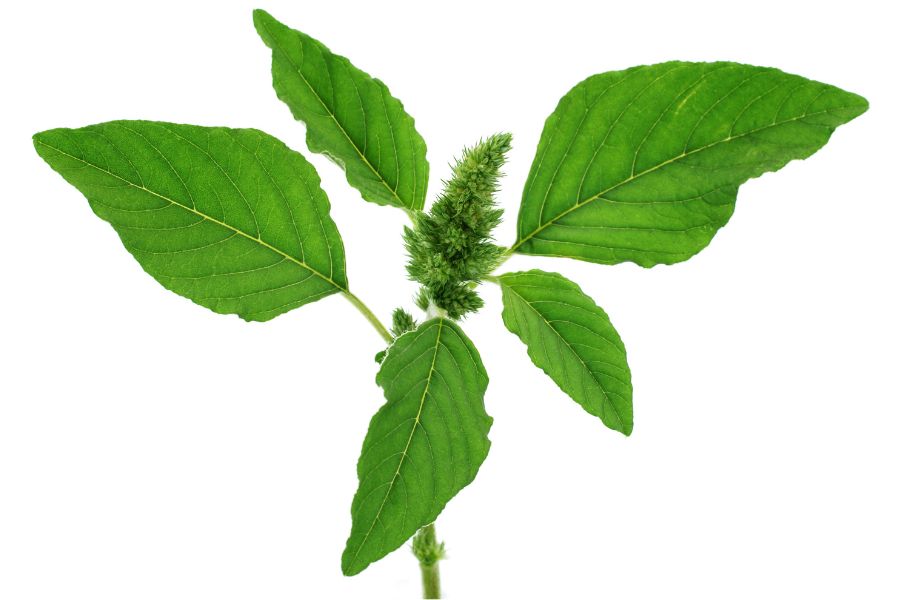You can forage a wide variety of edible plants throughout South Carolina if you pay close attention to what’s growing nearby. Henbit shows up early and often, thriving in cooler months when not much else is available. You may also come across meadow garlic, with its mild bite and long, hollow leaves.
Even trees and vines offer more than people expect. Zarzaparrilla, with its climbing stems and thorny edges, has young shoots that can be eaten. And pine trees, found across much of the state, offer multiple edible parts depending on the season.
The range of edible species here is far greater than most people assume. With the right knowledge, even a short trip outdoors can result in an impressive haul. There’s a lot more growing around you than you think, and some of it might be well worth bringing home.
What We Cover In This Article:
- The Edible Plants Found in the State
- Toxic Plants That Look Like Edible Plants
- How to Get the Best Results Foraging
- Where to Find Forageables in the State
- Peak Foraging Seasons
- The extensive local experience and understanding of our team
- Input from multiple local foragers and foraging groups
- The accessibility of the various locations
- Safety and potential hazards when collecting
- Private and public locations
- A desire to include locations for both experienced foragers and those who are just starting out
Using these weights we think we’ve put together the best list out there for just about any forager to be successful!
A Quick Reminder
Before we get into the specifics about where and how to find these plants and mushrooms, we want to be clear that before ingesting any wild plant or mushroom, it should be identified with 100% certainty as edible by someone qualified and experienced in mushroom and plant identification, such as a professional mycologist or an expert forager. Misidentification can lead to serious illness or death.
All plants and mushrooms have the potential to cause severe adverse reactions in certain individuals, even death. If you are consuming wild foragables, it is crucial to cook them thoroughly and properly and only eat a small portion to test for personal tolerance. Some people may have allergies or sensitivities to specific mushrooms and plants, even if they are considered safe for others.
The information provided in this article is for general informational and educational purposes only. Foraging involves inherent risks.
The Edible Plants Found in the State
Wild plants found across the state can add fresh, seasonal ingredients to your meals:
Bramble (Rubus fruticosus)
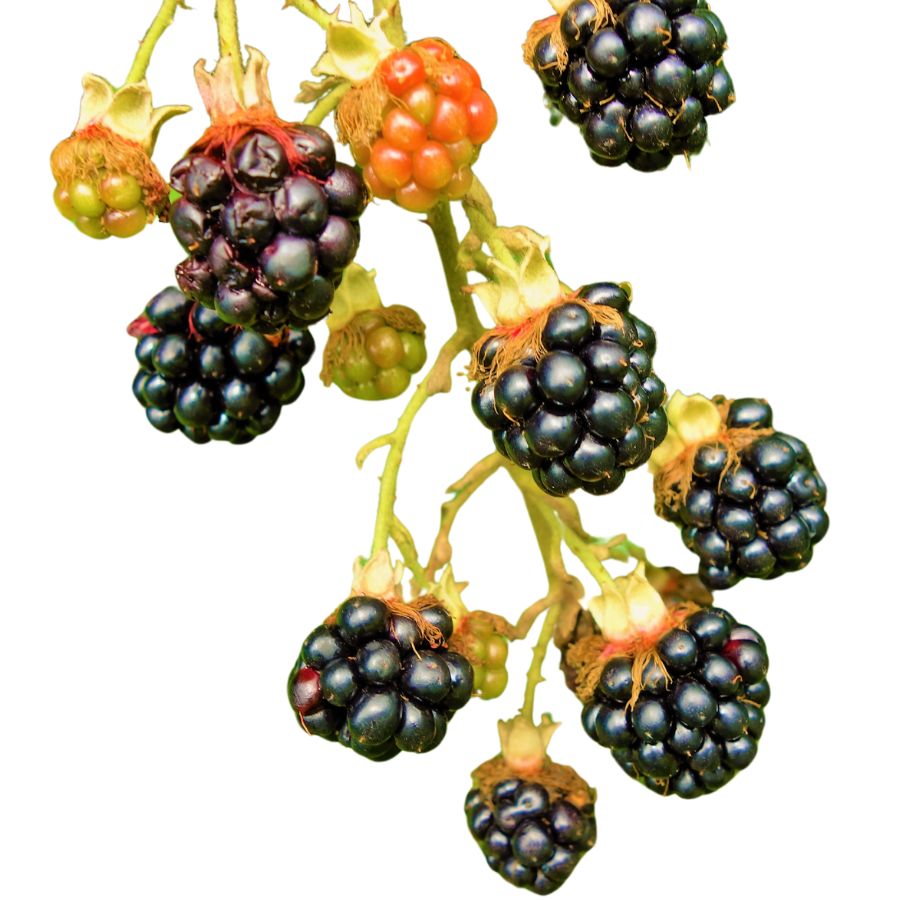
The fruit of brambles grows in clusters of small, shiny drupelets that form a rounded or slightly conical shape, usually deep black when ripe. They have a juicy, sweet-tart flavor and a seedy texture that’s familiar in pies and jams.
You can also eat the young shoots peeled raw or lightly cooked, though the rest of the stem is covered in thorns and not edible. Bramble leaves are technically edible, but they’re very astringent and more commonly steeped for tea than eaten.
Avoid mistaking black nightshade berries for brambles; nightshade fruits grow singly, have smooth skin, and lack the segmented drupelet structure. While brambles grow on thorny, arching canes, nightshade plants tend to be smaller, herbaceous, and thornless.
Brambles are commonly turned into jam, syrup, or wine, but they’re also good fresh in salads or mashed into sauces. If you’re harvesting, beware the bramble thorns, which can break the skin and cause irritation if you aren’t careful.
Meadow Garlic (Allium canadense)
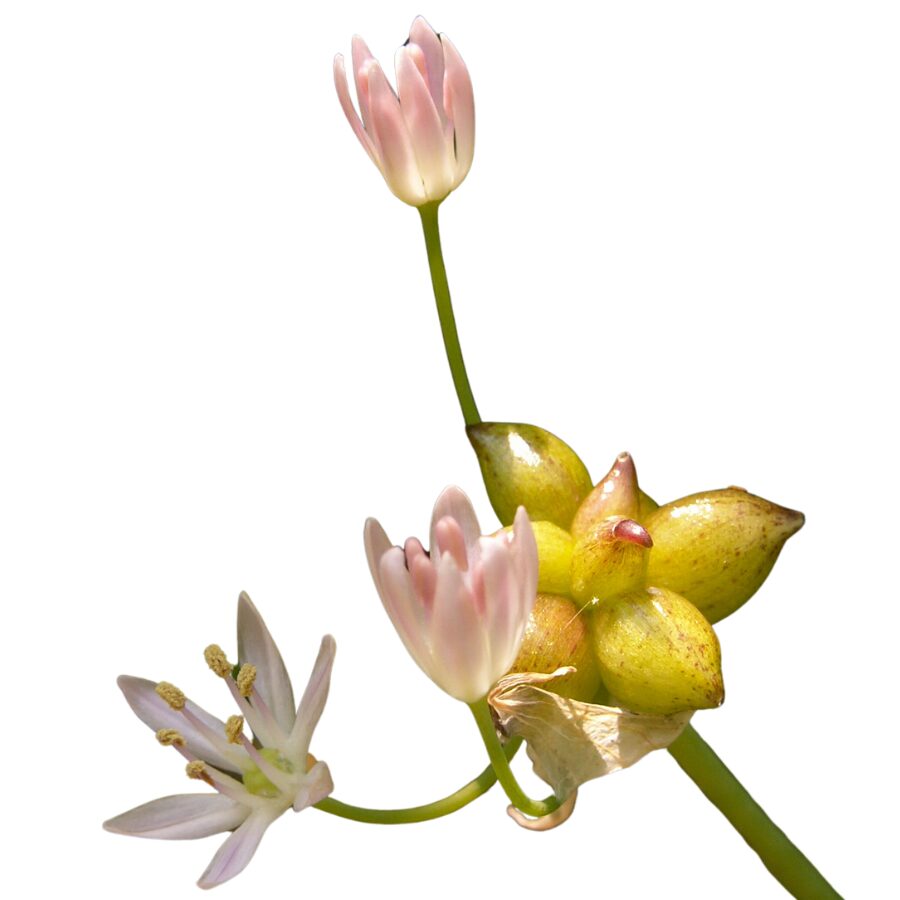
Meadow garlic, also called wild onion or wild garlic, grows in clumps with slender hollow leaves and small pink or white flowers. You’ll recognize it by the onion scent released when you bruise the stems or dig into the bulb.
The edible parts include the bulbs, stems, leaves, and flowers, all of which have a mild onion flavor and crisp texture. Cook them as you would scallions—sautéed, grilled, or tossed raw into salads.
False garlic, or crow poison, looks similar but lacks the onion smell and can be toxic if eaten. Always crush the plant before harvesting—no onion scent means don’t eat it.
Many people pickle the bulbs or chop the greens for compound butters and dips. Be cautious where you forage it though, as plants growing near roadsides or sprayed areas can absorb contaminants.
Dandelion (Taraxacum officinale)
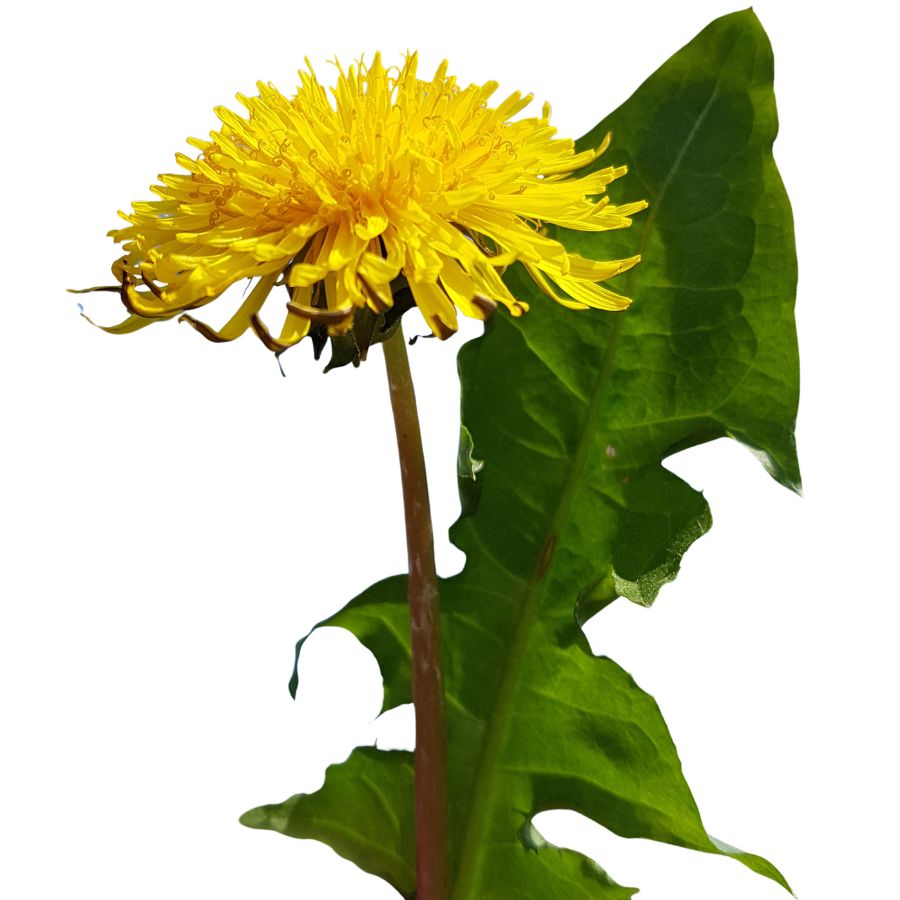
Bright yellow flowers and jagged, deeply toothed leaves make dandelions easy to spot in open fields, lawns, and roadsides. You might also hear them called lion’s tooth, blowball, or puffball once the flowers turn into round, white seed heads.
Every part of the dandelion is edible, but you will want to avoid harvesting from places treated with pesticides or roadside areas with heavy car traffic. Besides being a food source, dandelions have been used traditionally for simple herbal remedies and natural dye projects.
Young dandelion leaves have a slightly bitter, peppery flavor that works well in salads or sautés, and the flowers can be fried into fritters or brewed into tea. Some people even roast the roots to make a coffee substitute with a rich, earthy taste.
One thing to watch out for is cat’s ear, a common lookalike with hairy leaves and branching flower stems instead of a single, hollow one. To make sure you have a true dandelion, check for a smooth, hairless stem that oozes a milky sap when broken.
Chickweed (Stellaria media)
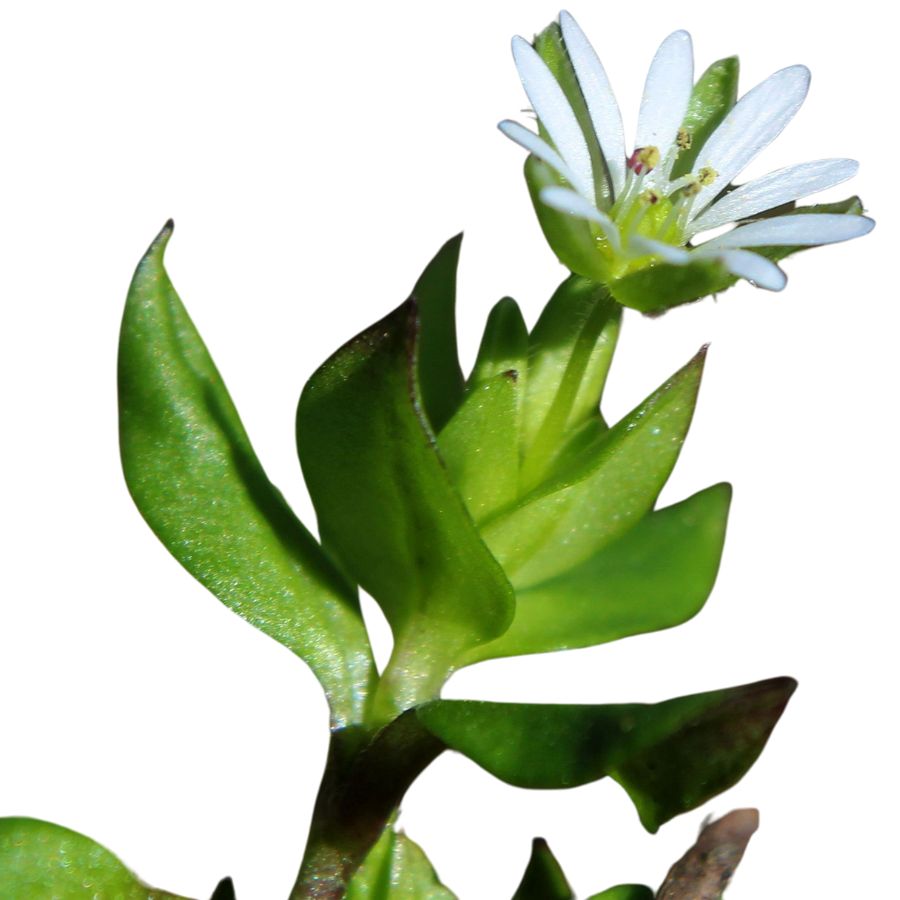
Chickweed, sometimes called satin flower or starweed, is a small, low-growing plant with delicate white star-shaped flowers and bright green leaves. The leaves are oval, pointed at the tip, and often grow in pairs along a slender, somewhat weak-looking stem.
When gathering chickweed, watch out for lookalikes like scarlet pimpernel, which has similar leaves but orange flowers instead of white. A key detail to check is the fine line of hairs that runs along one side of chickweed’s stem, a feature the dangerous lookalikes do not have.
The young leaves, tender stems, and flowers of chickweed are all edible, offering a mild, slightly grassy flavor with a crisp texture. You can toss it fresh into salads, blend it into pestos, or lightly wilt it into soups and stir-fries for a fresh green boost.
Aside from being a food plant, chickweed has been used traditionally in poultices and salves to help soothe skin irritations. Always make sure the plant is positively identified before eating, since mistaking it for a toxic lookalike could cause serious issues.
Lamb’s Quarters (Chenopodium album)
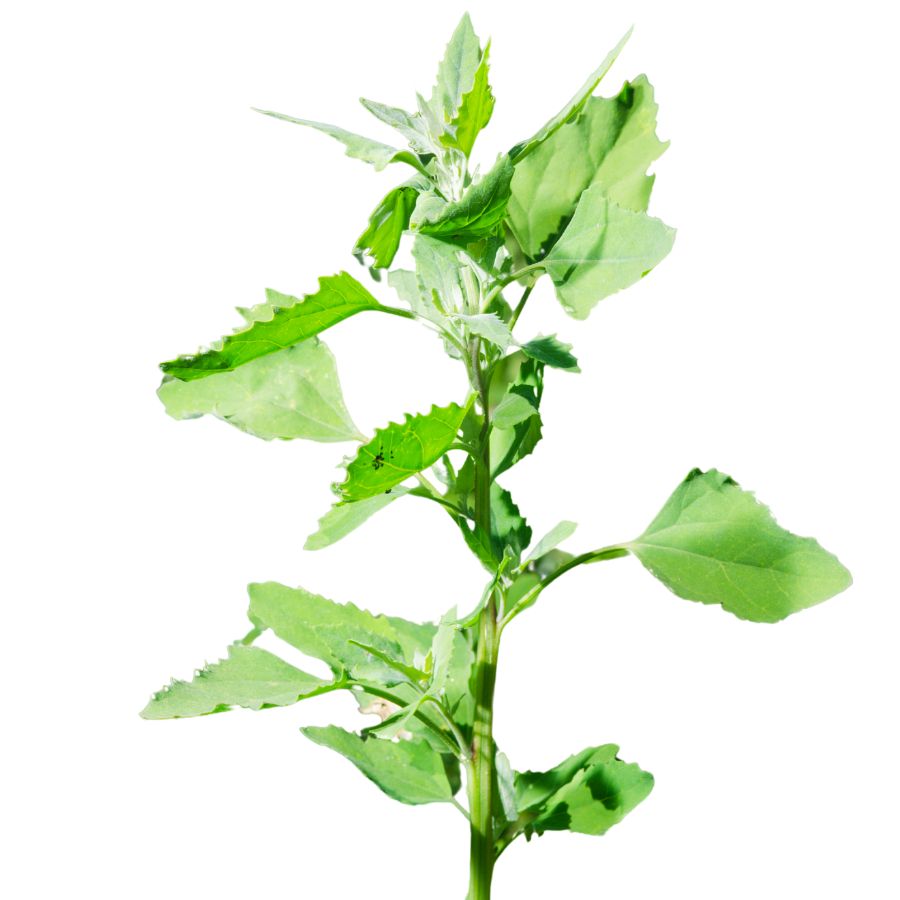
Lamb’s quarters, also called wild spinach and pigweed, has soft green leaves that often look dusted with a white, powdery coating. The leaves are shaped a little like goose feet, with slightly jagged edges and a smooth underside that feels almost velvety when you touch it.
A few plants can be confused with lamb’s quarters, like some types of nightshade, but true lamb’s quarters never have berries and its leaves are usually coated in that distinctive white bloom. Always check that the stems are grooved and not round and smooth like the poisonous lookalikes.
When you taste lamb’s quarters, you will notice it has a mild, slightly nutty flavor that gets richer when cooked. The young leaves, tender stems, and even the seeds are all edible, but you should avoid eating the older stems because they become tough and stringy.
People often sauté lamb’s quarters like spinach, blend it into smoothies, or dry the leaves for later use in soups and stews. It is also rich in oxalates, so you will want to cook it before eating large amounts to avoid any problems.
Henbit (Lamium amplexicaule)
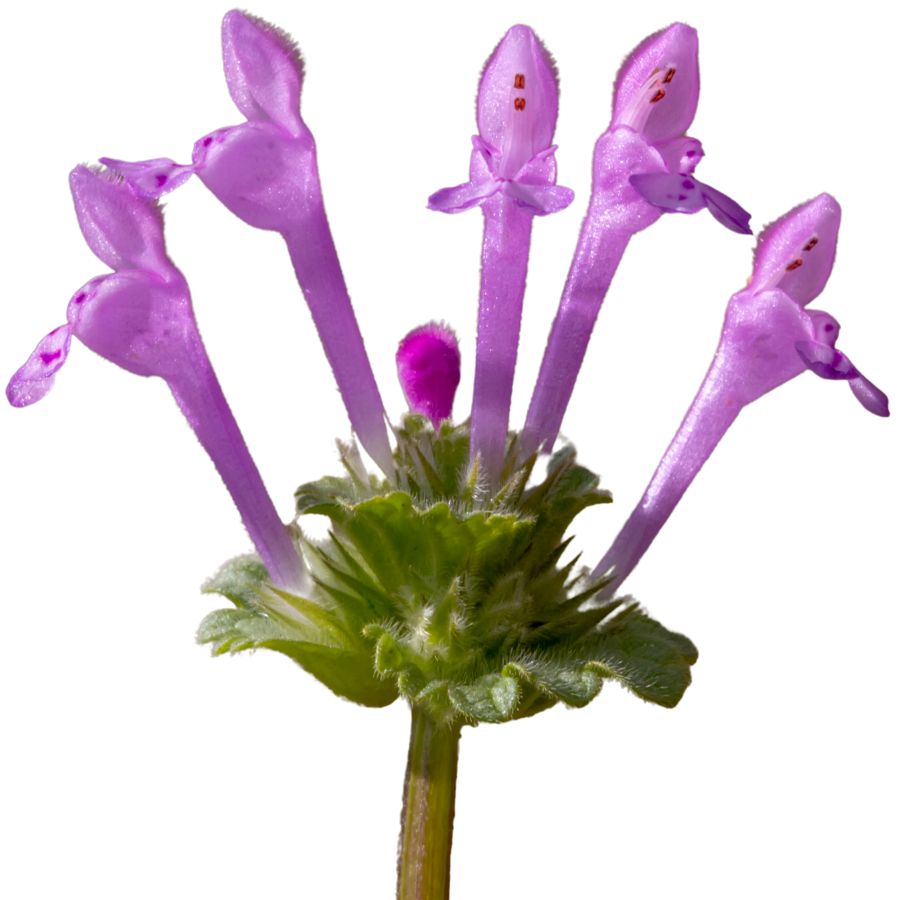
Henbit, which is also known as giraffe head or henbit deadnettle, is a small plant with fuzzy, scalloped leaves and tiny pink-purple flowers. You can spot it easily by the way its square stems branch low to the ground while the leaves crowd around the stem in neat whorls.
The stems, leaves, and flowers are all edible and can be eaten raw or cooked. They have a mild, slightly sweet flavor with a soft texture that works well in salads, smoothies, or lightly sautéed dishes.
Henbit is often added fresh to salads or used as a tender green in soups and stir-fries. There is no need to cook it for long because it wilts quickly and can lose its flavor if overcooked.
It’s important to remember that henbit can look similar to purple deadnettle, but henbit’s leaves are more rounded and clasp the stem directly without long stalks. Another lookalike is ground ivy, which has a stronger smell and a creeping growth habit that henbit does not.
Pine (Pinus spp.)
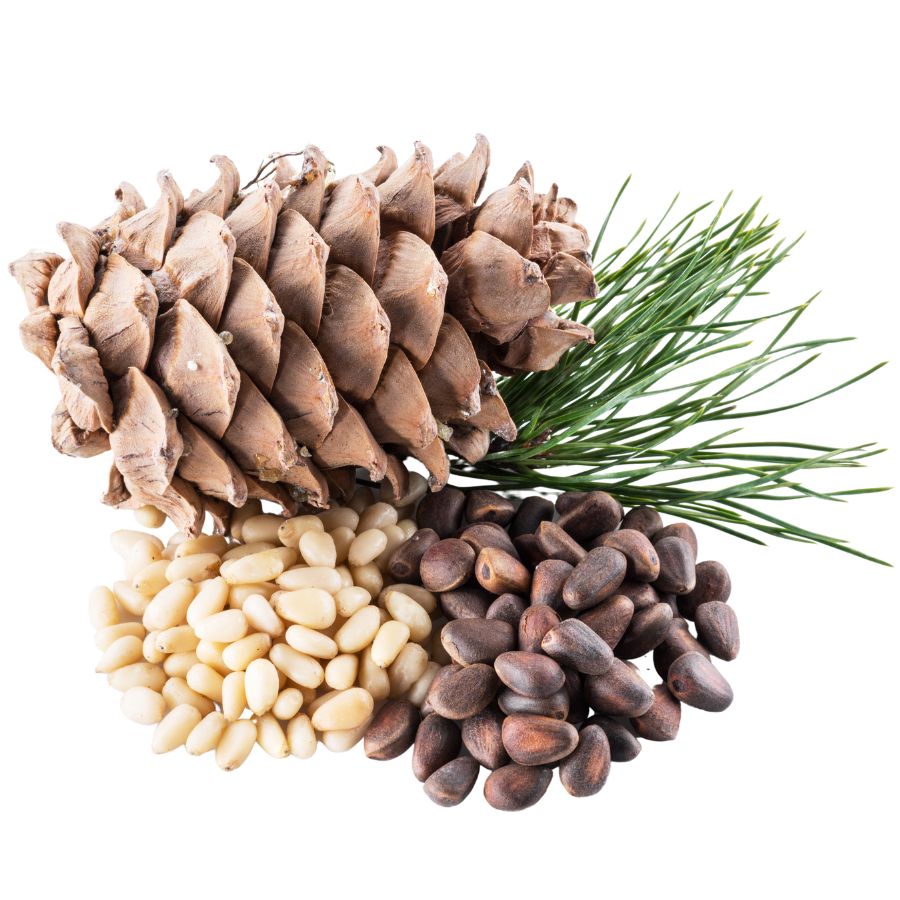
Pine trees offer several edible parts, including the fresh needles, which are used to make tea with a piney, slightly sour flavor. Their bundles of long, slender needles make them easy to separate from toxic lookalikes like yew, which has flat, single needles.
The seeds—pine nuts—are tucked away between the scales of mature cones and are highly nutritious. They’re often toasted to bring out their rich, oily flavor and are commonly added to trail mixes and pasta dishes.
You can scrape the soft white layer of inner bark and dry it into flour, though it’s mostly a fallback food. This layer is chewy when raw and works best when baked or roasted.
Not all pines are safe to eat, and some species contain compounds that can upset your stomach. When in doubt, Eastern White Pine is one of the most widely accepted edible types.
American Persimmon (Diospyros virginiana)
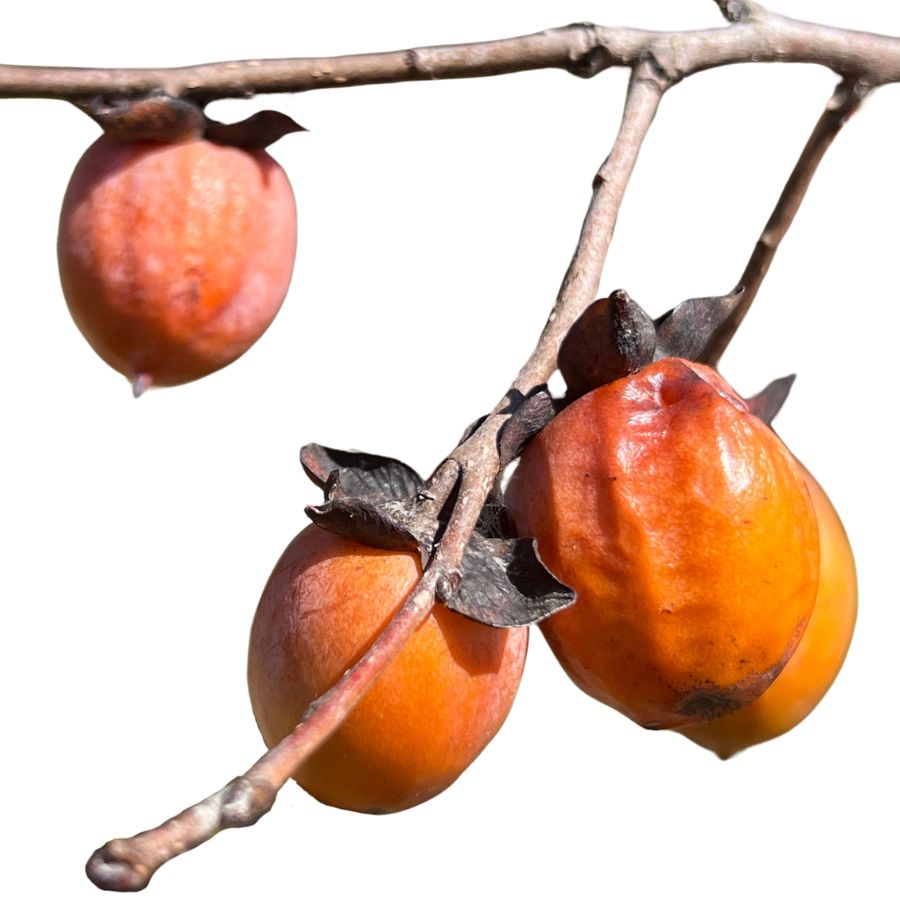
Persimmon, sometimes called American persimmon or common persimmon, grows as a small tree with rough, blocky bark and oval-shaped leaves. The fruit looks like a small, flattened tomato and turns a deep orange or reddish color when ripe.
If you bite into an unripe persimmon, you will quickly notice an extremely astringent, mouth-drying effect. A ripe persimmon, on the other hand, tastes sweet, rich, and custard-like, with a soft and jelly-like texture inside.
You can eat persimmons fresh once they are fully ripe, or you can cook them down into puddings, jams, and baked goods. Some people also mash and freeze the pulp to use later for pies, breads, and sauces.
Wild persimmons can sometimes be confused with black nightshade berries, but nightshade fruits are much smaller, grow in clusters, and stay dark purple or black. Only the ripe fruit of the persimmon tree should be eaten; the seeds and the unripe fruit are not edible.
Mulberry (Morus rubra)
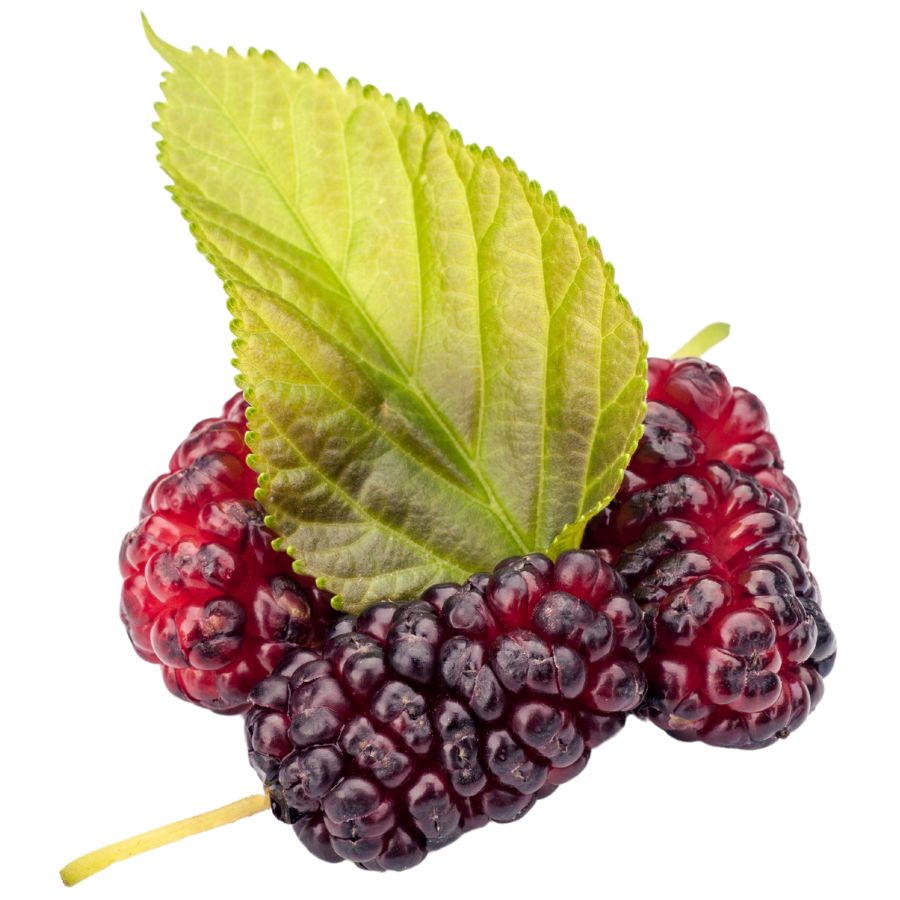
Sweet, juicy, and often overlooked, mulberries are one of the easiest wild berries to recognize. Known by names like white mulberry and red mulberry, these trees produce small, blackberry-like fruits that range from pale pink to deep purple.
The berries have a soft, almost melting texture with a mild tartness behind the sugar. You can eat them fresh by the handful, bake them into pies, or simmer them down into homemade jams and syrups.
While the fruits are safe and delicious when ripe, you should avoid eating the unripe berries or any part of the tree’s sap, which can cause stomach upset. It is also worth knowing that mulberries are delicate and bruise easily when picked, so handle them gently.
Red osier dogwood and some honeysuckles can produce berries that look similar from a distance, but true mulberries grow singly or in loose clusters along the branches and have a distinctive leaf shape that sets them apart. Always double-check the leaf texture and berry arrangement before eating any wild fruits.
Zarzaparrilla (Smilax bona-nox)

If you’ve ever brushed past zarzaparrilla, you’ve probably noticed its hooked thorns and glossy, heart-shaped leaves. The young shoots and tender tips are edible and have a crisp texture with a mild, slightly earthy flavor.
You can boil the shoots or toss them into stews where they soften quickly and take on surrounding flavors. Avoid mistaking it for catbrier species with duller, more fibrous stems—zarzaparrilla has a smoother, more palatable growth when young.
The roots are sometimes chewed raw, though they’re fibrous and taste more bitter than the shoots. Leaves are technically edible but tough and better left alone unless very young.
Look out for the woody vine’s tendrils and its characteristic green stems lined with small prickles. Don’t try to eat the mature parts—older vines become too tough to chew and are no longer suitable for cooking.
American Beautyberry (Callicarpa americana)
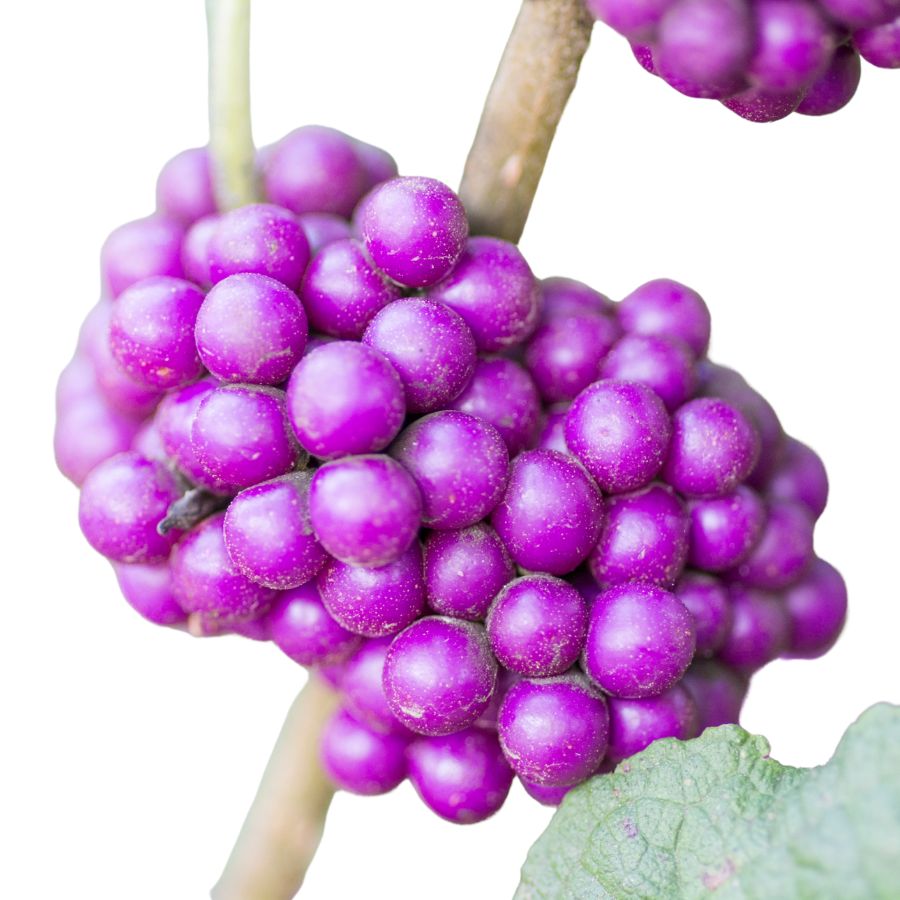
American beautyberry, sometimes called French mulberry or sourbush, is highly easily recognizable thanks to its bright clusters of purple berries wrapped tightly around its stems. The plant itself has arching branches and broad, serrated leaves that give off a slight spicy scent when crushed.
The berries are edible and have a mild, slightly sweet flavor with a soft, juicy texture that some people find a little gritty. Only the ripe purple berries should be eaten, as the leaves and unripe berries are not considered edible.
One of the easiest ways to enjoy beautyberries is by making jelly, where the fruit’s subtle taste really shines through. Some people also simmer the berries into syrups or add them to baked goods, although the flavor can be too delicate to stand out without a little help from sugar or lemon.
Beautyberries are sometimes confused with pokeweed, but pokeweed’s berries are a darker purple and grow on red stems in drooping clusters rather than tight whorls. Always double-check the plant’s structure and berry arrangement so you can be sure you are harvesting true American beautyberry.
Common Blue Violet (Viola sororia)
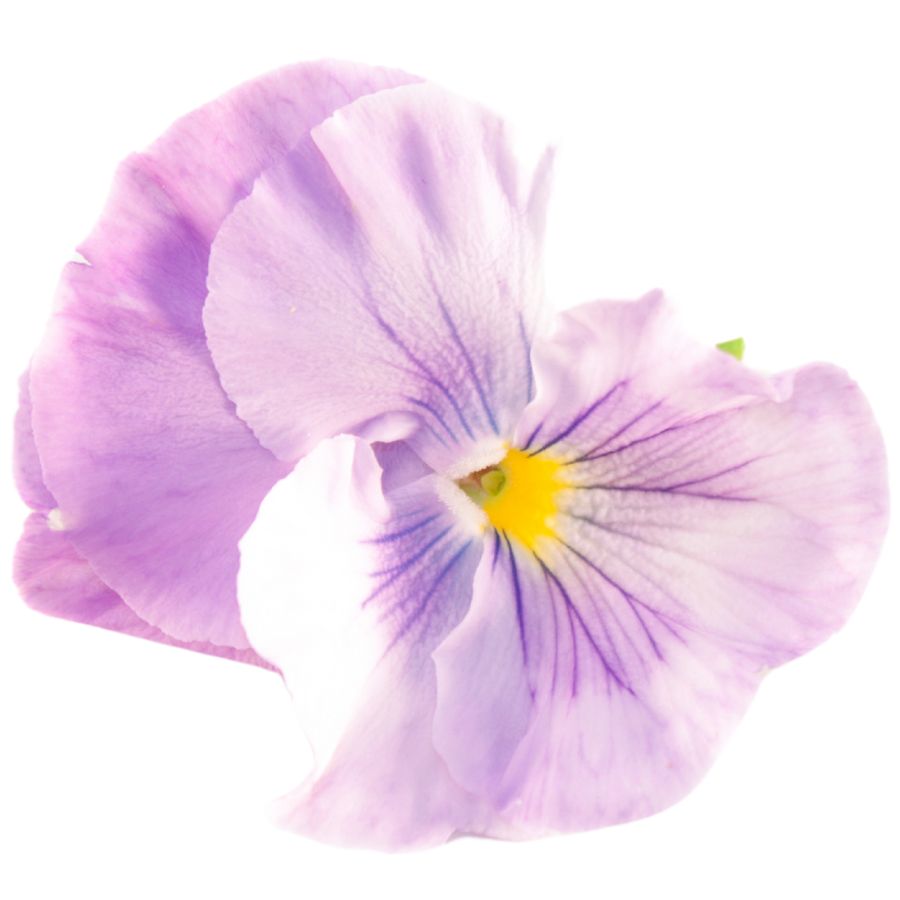
Common blue violet, also called wood violet and meadow violet, grows close to the ground with heart-shaped leaves and purple flowers. The blossoms have five petals, with the lower petal often streaked in darker lines that act like nectar guides for pollinators.
You can eat both the flowers and the young leaves, but skip the older leaves since they tend to get tough and stringy. The blooms taste mild and a little sweet, while the leaves are more grassy and bland.
People often use the flowers to decorate cakes, candy them for treats, or toss them into salads for a pop of color. The leaves can be thrown into soups or smoothies, but it is better to chop them fine because they have a slightly mucilaginous texture.
One plant that sometimes gets confused with common blue violet is lesser celandine, which has shiny, darker leaves and starry yellow flowers instead of purple ones. Always double-check before gathering because eating lesser celandine raw can make you sick.
Wood Sorrel (Oxalis stricta)
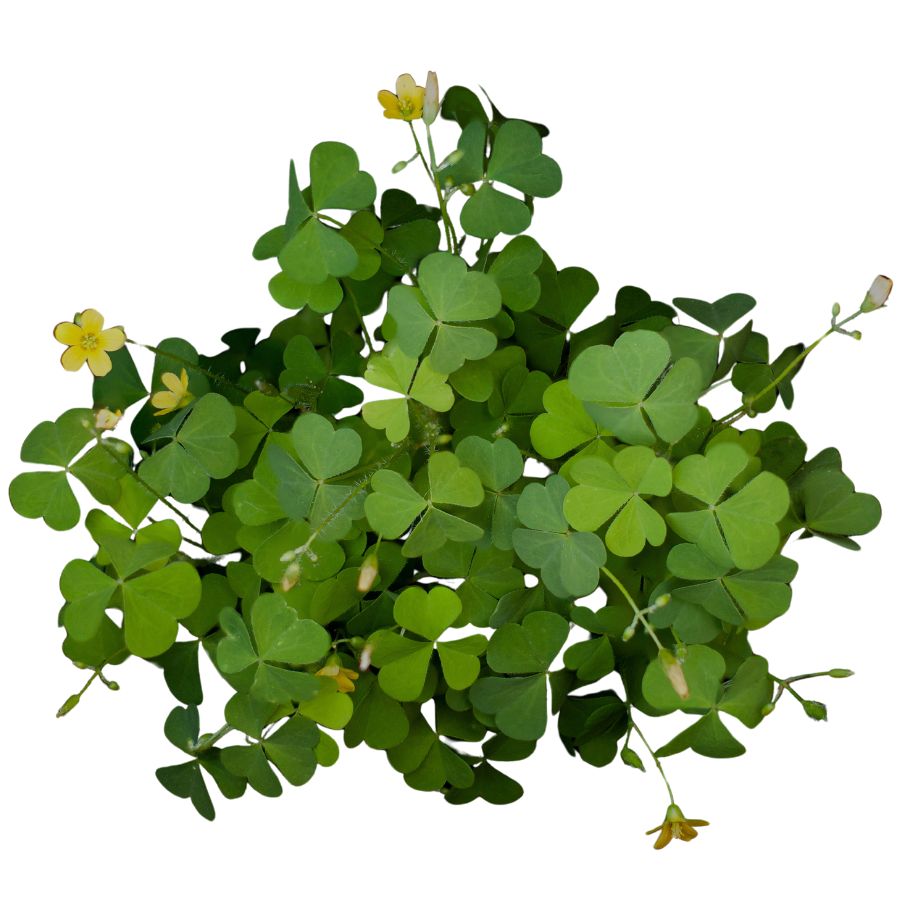
Wood sorrel has clover-like leaves and small yellow flowers. Each leaflet is heart-shaped, and the plant often folds up when touched or in low light.
The leaves, flowers, and seed pods are all safe to eat and have a tart, lemony flavor thanks to the oxalic acid they contain. You can toss them into salads, use them as a garnish, or nibble on them raw for a refreshing sour bite.
Be careful not to confuse it with clover, which has rounder leaves and lacks the same sharp tang when tasted. Large amounts of wood sorrel aren’t recommended if you have kidney issues, since oxalic acid can be hard on the kidneys over time.
The texture of the leaves is soft and delicate, making them a nice contrast in dishes with heavier greens. Even the seed pods have a bit of crunch and a pleasant tang if you catch them before they dry out.
Sassafras (Sassafras albidum)
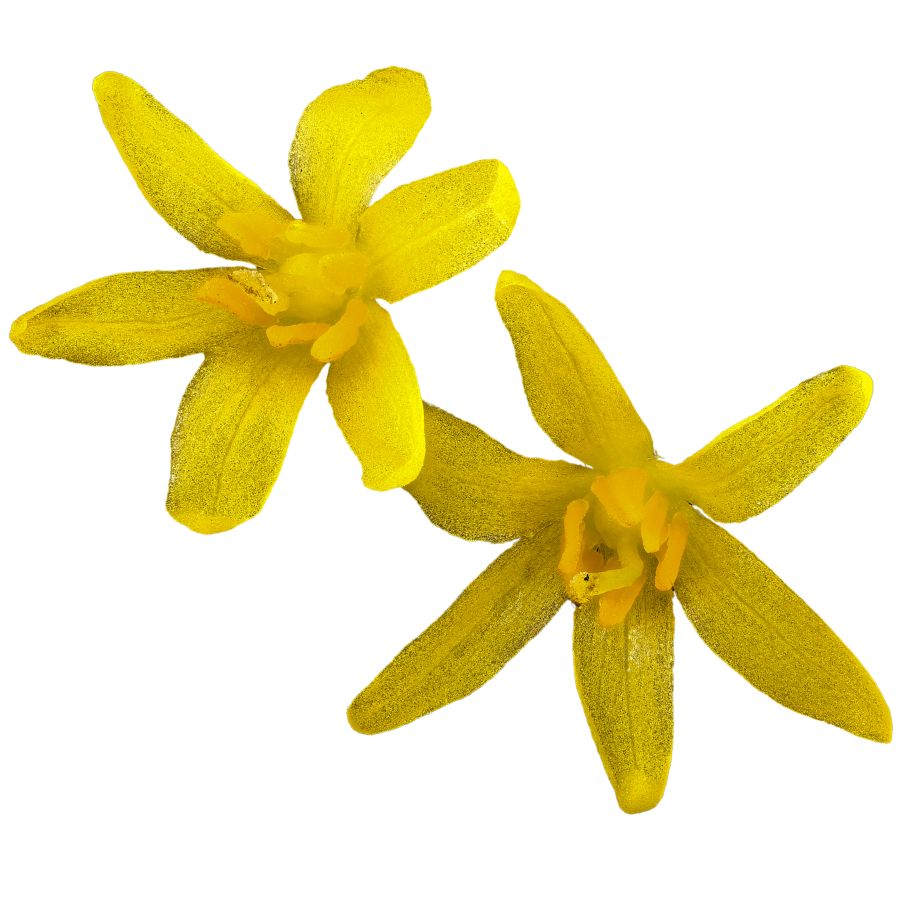
Sassafras is a small deciduous tree with bright green leaves that feel slightly mucilaginous when crushed. You can eat the young leaves raw or dried, and they develop a unique flavor—lightly citrusy, with a smooth texture when chewed.
People use the ground leaves as a thickener in soups and stews, especially in southern recipes. The bark and roots have a stronger taste and were historically brewed into teas with a deep, spicy profile.
There’s a caution with sassafras root: it contains safrole, which has been restricted from commercial food use due to safety studies. However, using a small amount occasionally in traditional preparations is still common in home kitchens.
The tree has a sweet, clove-like scent that sets it apart when the leaves or twigs are snapped. Its closest lookalikes lack that scent and don’t have the same combination of leaf shapes on a single branch.
Daylily (Hemerocallis fulva)
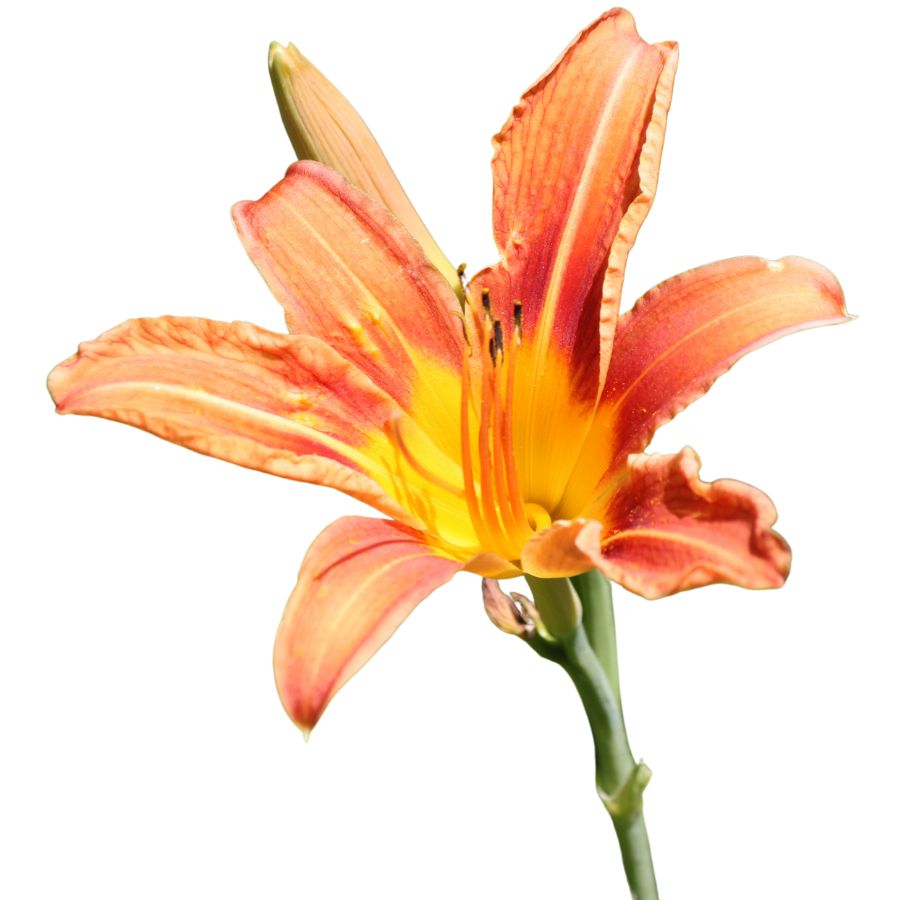
Bright orange flowers known as daylily, tiger lily, or ditch lily can sometimes be mistaken for other plants that are not safe to eat. True daylilies have long, blade-like leaves that grow in clumps at the base and a hollow flower stem, while their toxic lookalikes often have solid stems or different leaf patterns.
When it comes to flavor, daylily buds have a crisp texture and a mild taste that some people compare to green beans or asparagus. The flowers are tender and slightly sweet, which makes them popular for tossing into salads or lightly stir-frying.
Most people use the unopened flower buds in cooking, but the young shoots and tuber-like roots are also gathered for food. Always make sure you are harvesting from clean areas, because roadside plants can carry pollutants that are not safe to eat.
A few important cautions come with daylilies, since some people experience digestive upset after eating large amounts. Start by tasting a small quantity first to see how your body reacts before eating more.
Redroot Pigweed (Amaranthus retroflexus)
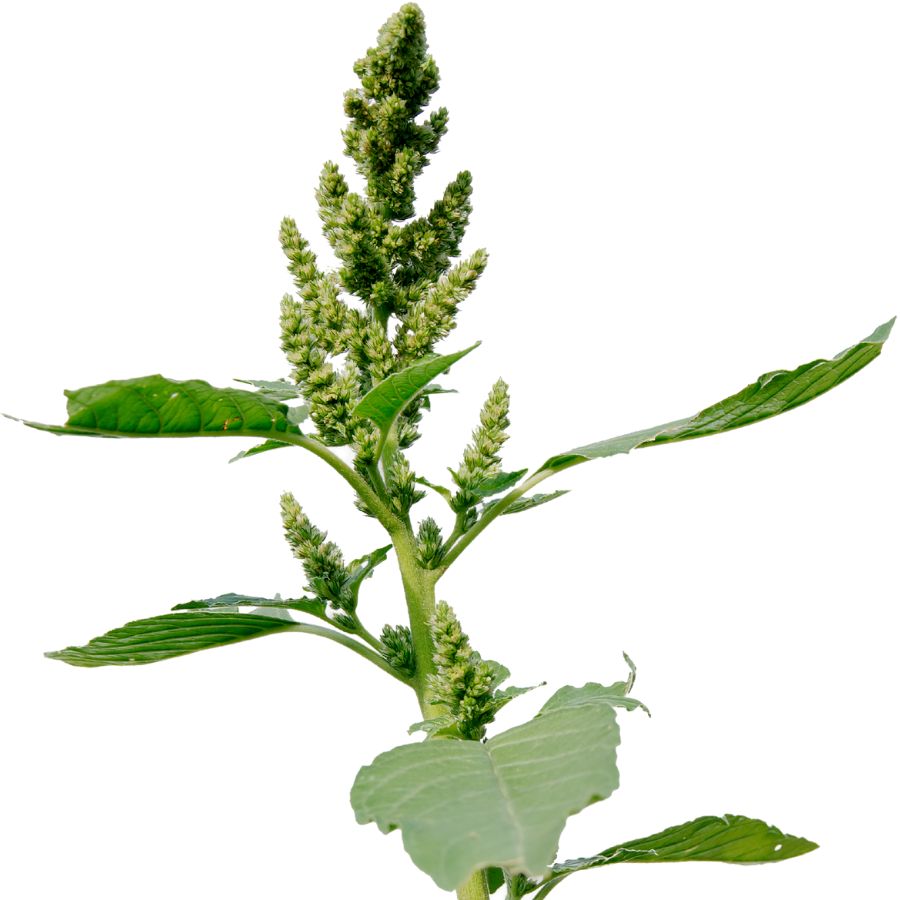
You’ve probably seen redroot pigweed—often called red-root amaranth or common amaranth—sprouting in vacant lots, gardens, or even sidewalks, with its dense clusters of greenish flowers and coarse, branching stems. Its leaves are dull green and oval-shaped with a slight point, and its thick taproot is usually red.
The young leaves and stems cook down well into soups, stir-fries, or stews, and the texture becomes silky once wilted. Raw, they can be bitter, but the bitterness fades after blanching or sautéing with oil and salt.
Don’t confuse it with spiny amaranth, which has small, rigid spines at the leaf nodes—those are absent on pigweed. While pigweed is edible, it’s best to avoid plants from contaminated soils, since it absorbs heavy metals and herbicide residue.
The seeds, though tiny, can be collected in bulk and toasted or added to grain dishes. You can also sprout them for a slightly nutty taste, but be aware the seedheads can be hard to clean due to their chaff.
Smartweed (Persicaria hydropiper)
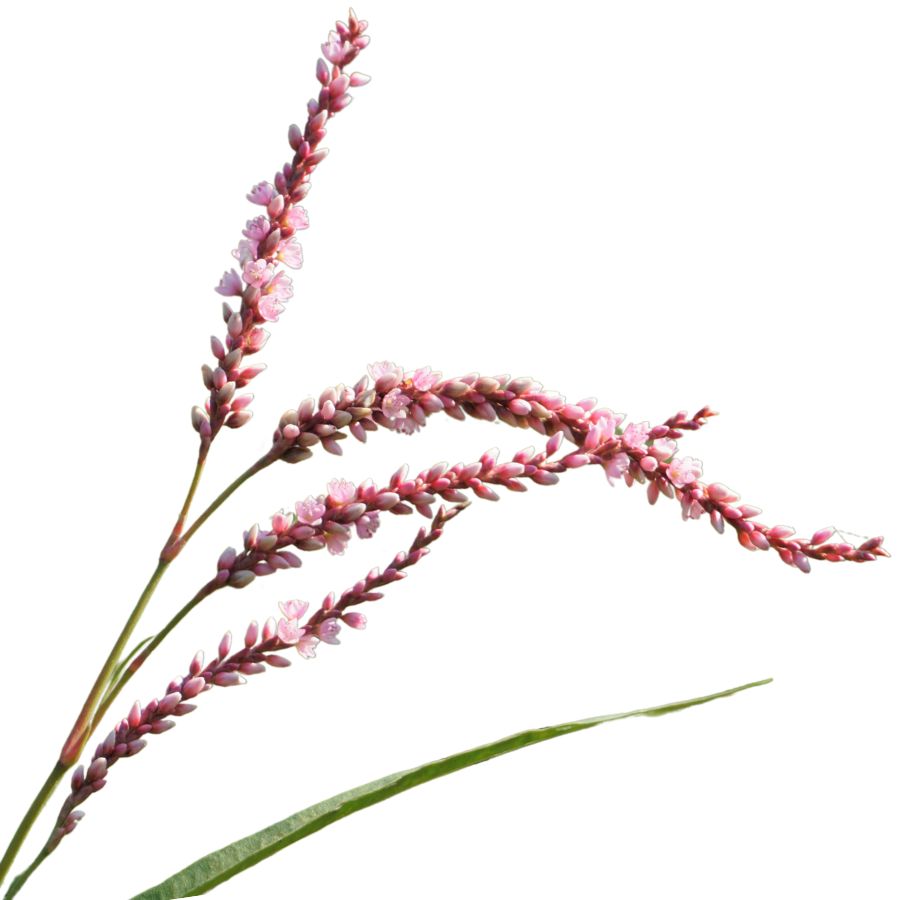
Smartweed, also called water pepper or knotweed, grows with lance-shaped leaves and reddish joints where the leaves meet the stem. The flowers form dense, drooping clusters that range from pale pink to white.
What sets this plant apart is the fiery kick packed in the leaves—it’s strong enough to numb your tongue if you’re not expecting it. The fresh greens can be finely chopped into soups or paired with vinegar to mellow out the intensity.
Avoid confusing it with other Persicaria species like Pennsylvania smartweed, which is milder and has more upright flower spikes. The edible part is strictly the leaf—everything else is either too bitter or too tough to use.
If you’re into bold flavors, smartweed just might be for you. Just don’t overdo it raw unless you’re into eye-watering heat.
Goldenrod (Solidago canadensis)
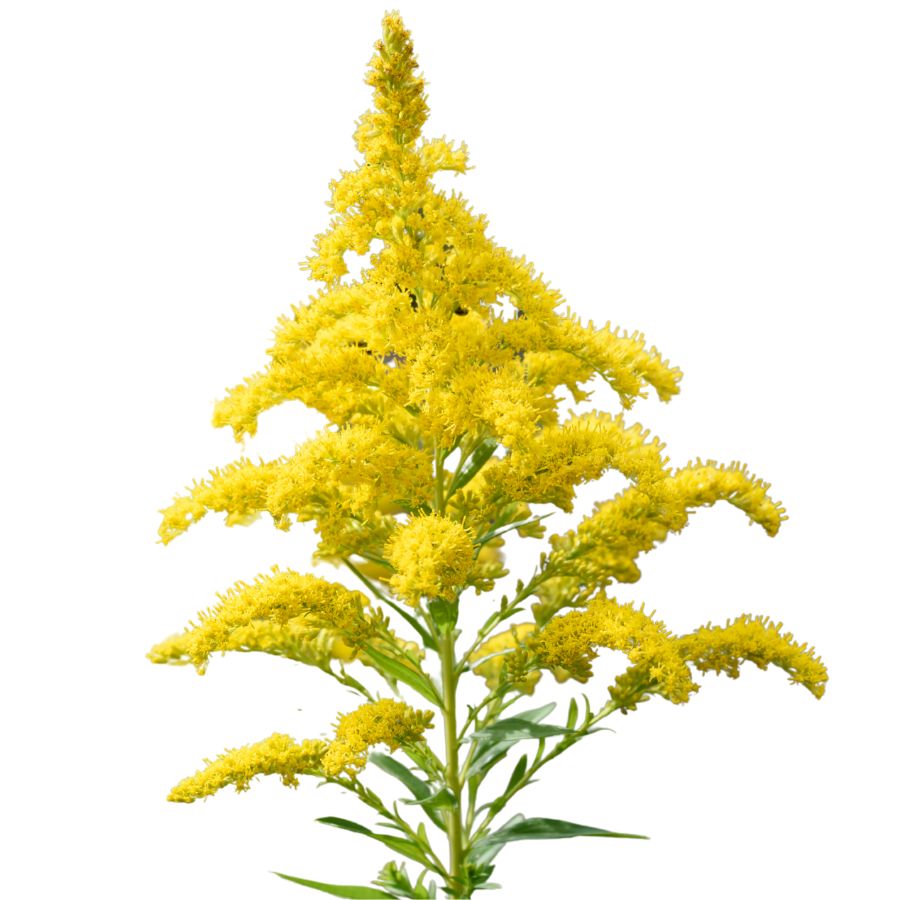
Goldenrod has tall, unbranched stems topped with golden flower sprays that you can dry or steep into tea. The taste is bold and slightly astringent, often balanced with lemon or mint in homemade brews.
Don’t mistake it for ragweed, which causes allergies and has inconspicuous green flowers instead. Goldenrod’s edible parts include the flowers and younger leaves, though the leaves are better when fresh.
Try candying the blossoms or using them as a garnish—they hold their color and shape surprisingly well. The flowers can be sticky with pollen, so rinse them gently if you’re using them fresh.
Goldenrod can cause reactions in people sensitive to other members of the aster family, so test it carefully if you’re unsure. Some people also notice a mild laxative effect if they consume too much at once.
Bull Thistle (Cirsium vulgare)

Bull thistle has long spines covering its leaves and stem, but the inner stem, flower stalks, and roots are edible when properly handled. The root has a flavor similar to Jerusalem artichoke and turns soft when boiled or roasted.
You can steam or boil the peeled stem to get a mild, artichoke-like taste with a fibrous bite. Raw, the stem is tougher but still palatable when young and peeled thoroughly.
Watch out for thistles with smooth or hairless leaves—these may be other species that don’t offer the same edible value. Bull thistle has deeply lobed, hairy leaves with sharp tips, helping you separate it from potentially less useful relatives.
Avoid the leaves unless you’re just after a bitter nibble, and never attempt to chew the spiny parts without removing all barbs. Flower heads can be used like small artichokes, though the yield is minimal compared to the effort.
Shepherd’s Purse (Capsella bursa-pastoris)
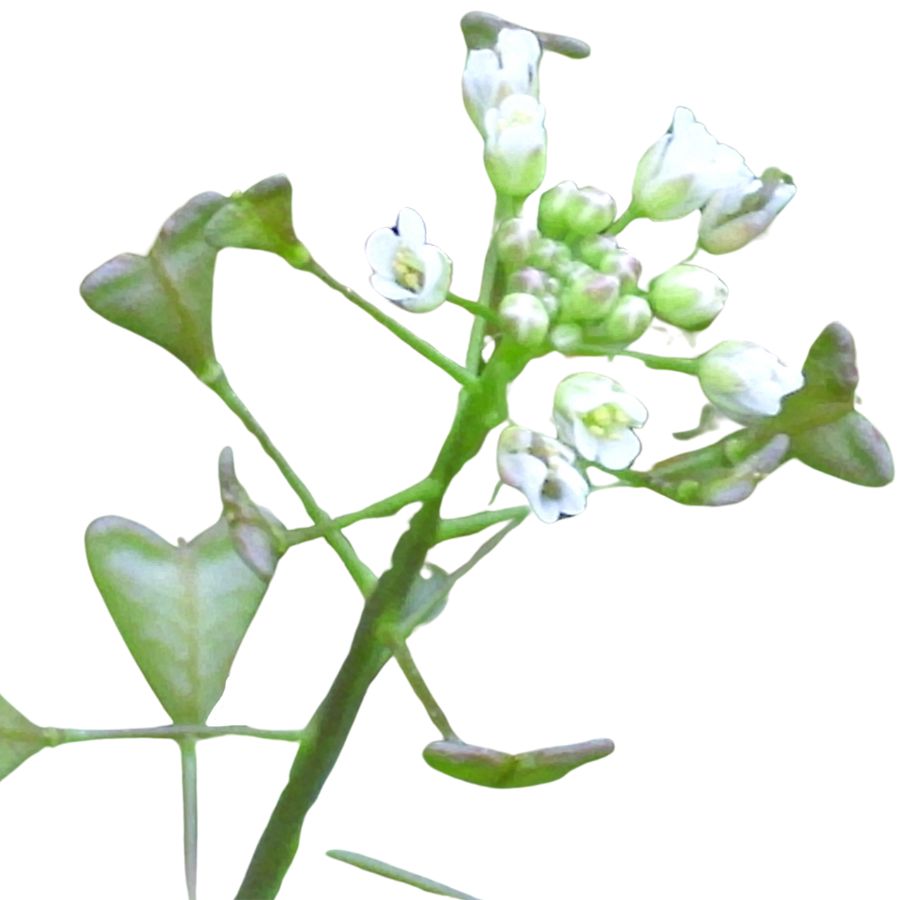
Shepherd’s purse is a small weedy plant with heart-shaped seed pods that look like tiny purses, growing close to the ground on thin stems. The leaves are often lobed and form a basal rosette, which helps distinguish it from lookalikes like hairy bittercress, whose pods are long and slender.
The tender young leaves are edible raw or cooked, with a slightly peppery taste and soft texture. Older leaves can become bitter and tough, so they’re better used in soups or sautés where the flavor mellows.
The seed pods are also edible and add a mild, mustard-like flavor when tossed into stir-fries or pickled. Stems and flowers are technically edible but rarely used due to their stringy or bland qualities.
Don’t confuse it with Virginia pepperweed, which also has edible parts but carries a stronger bite and a more upright growth habit. Stick to plants with the characteristic purse-shaped seed pods if you’re foraging for this one.
Toxic Plants That Look Like Edible Plants
There are plenty of wild edibles to choose from, but some toxic native plants closely resemble them. Mistaking the wrong one can lead to severe illness or even death, so it’s important to know exactly what you’re picking.
Poison Hemlock (Conium maculatum)
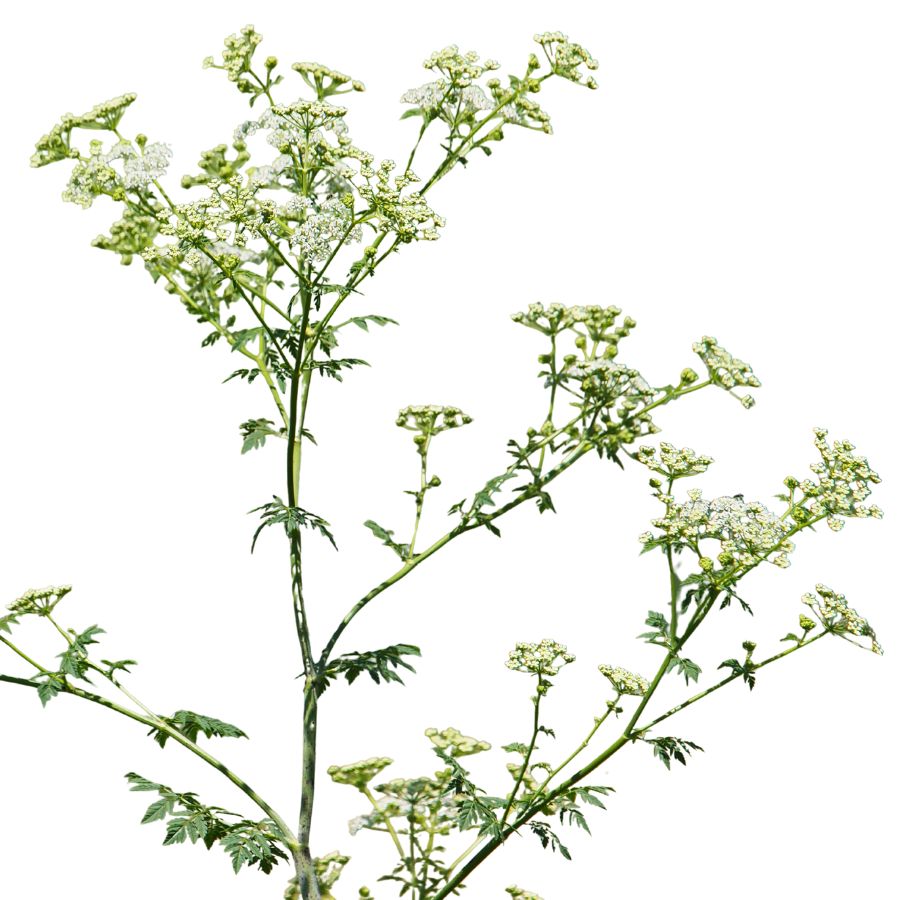
Often mistaken for: Wild carrot (Daucus carota)
Poison hemlock is a tall plant with lacy leaves and umbrella-like clusters of tiny white flowers. It has smooth, hollow stems with purple blotches and grows in sunny places like roadsides, meadows, and stream banks.
Unlike wild carrot, which has hairy stems and a dark central floret, poison hemlock has a musty odor and no flower center spot. It’s extremely toxic; just a small amount can be fatal, and even touching the sap can irritate the skin.
Water Hemlock (Cicuta spp.)
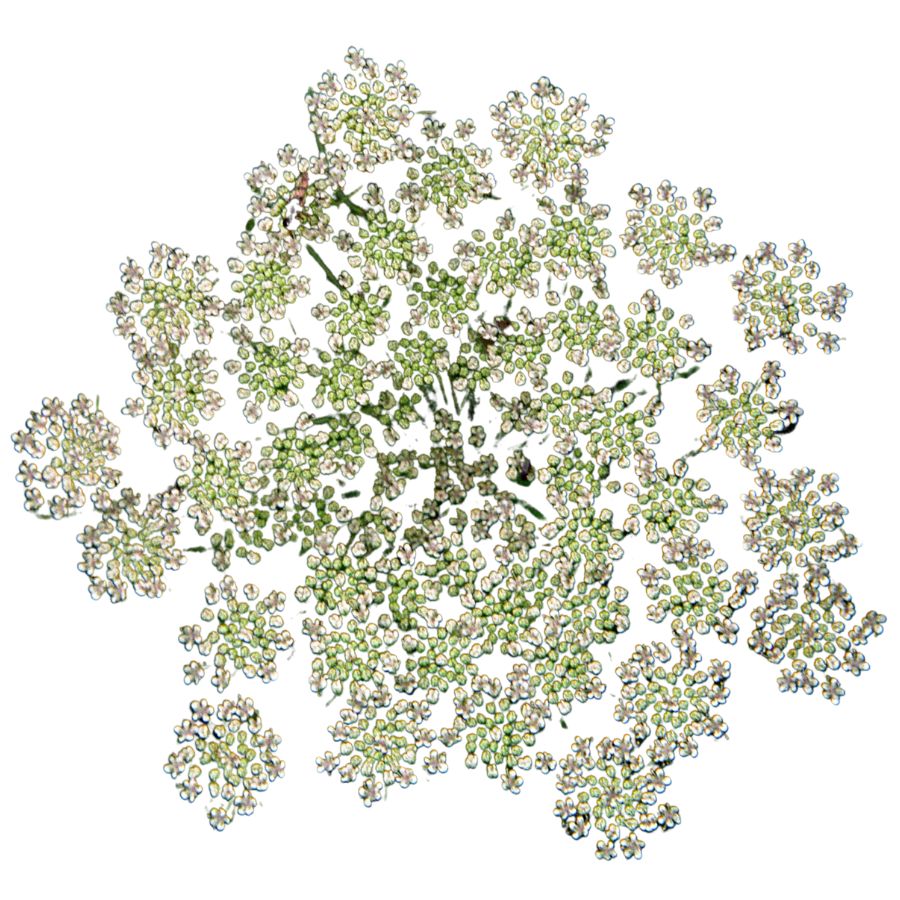
Often mistaken for: Wild parsnip (Pastinaca sativa) or wild celery (Apium spp.)
Water hemlock is a tall, branching plant with umbrella-shaped clusters of small white flowers. It grows in wet places like stream banks, marshes, and ditches, with stems that often show purple streaks or spots.
It can be confused with wild parsnip or wild celery, but its thick, hollow roots have internal chambers and release a yellow, foul-smelling sap when cut. Water hemlock is the most toxic plant in North America, and just a small amount can cause seizures, respiratory failure, and death.
False Hellebore (Veratrum viride)
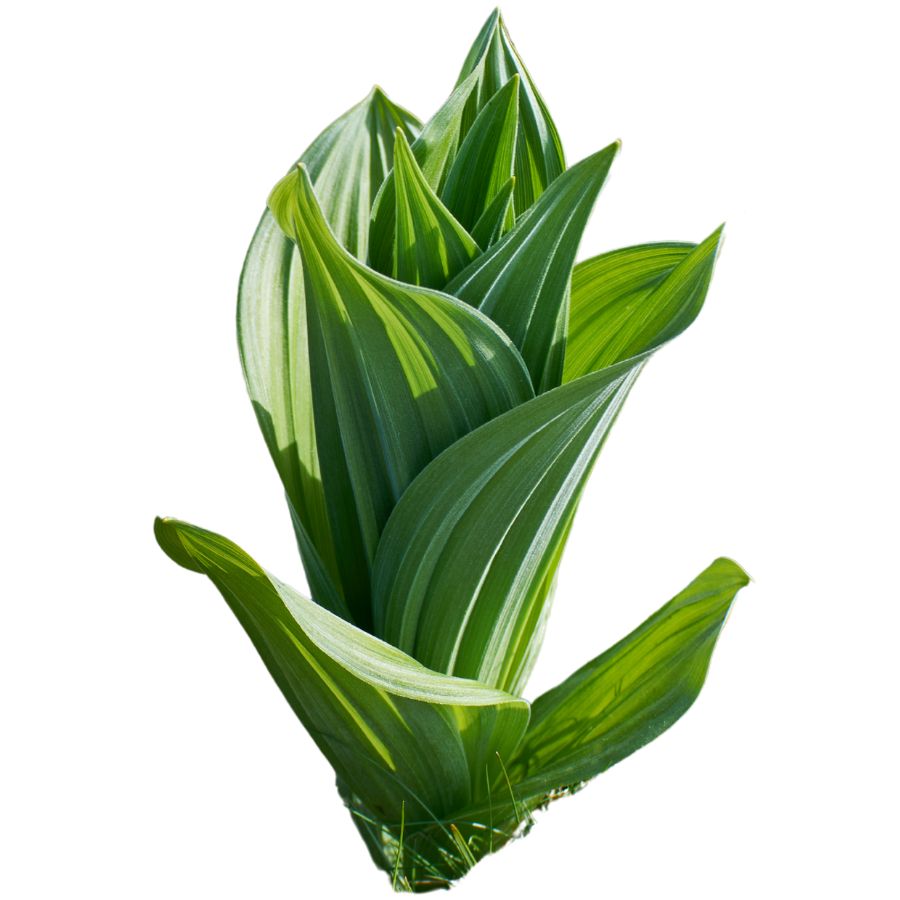
Often mistaken for: Ramps (Allium tricoccum)
False hellebore is a tall plant with broad, pleated green leaves that grow in a spiral from the base, often appearing early in spring. It grows in moist woods, meadows, and along streams.
It’s commonly mistaken for ramps, but ramps have a strong onion or garlic smell, while false hellebore is odorless and later grows a tall flower stalk. The plant is highly toxic, and eating any part can cause nausea, a slowed heart rate, and even death due to its alkaloids that affect the nervous and cardiovascular systems.
Death Camas (Zigadenus spp.)
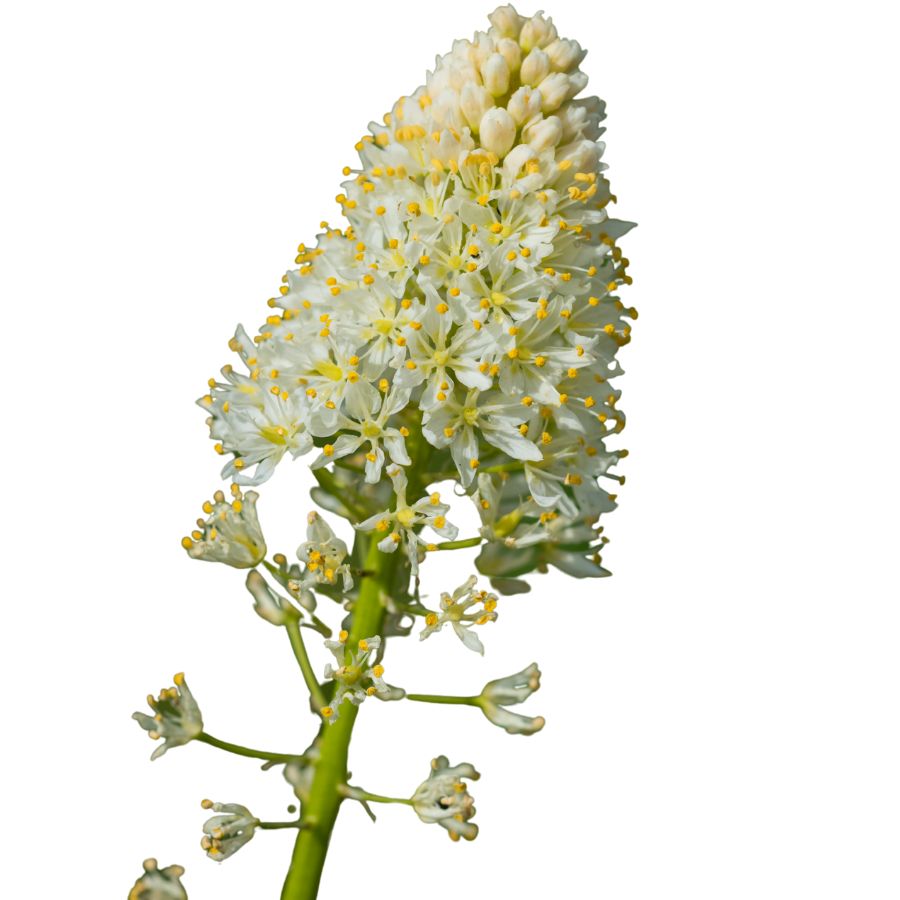
Often mistaken for: Wild onion or wild garlic (Allium spp.)
Death camas is a slender, grass-like plant that grows from underground bulbs and is found in open woods, meadows, and grassy hillsides. It has small, cream-colored flowers in loose clusters atop a tall stalk.
It’s often confused with wild onion or wild garlic due to their similar narrow leaves and habitats, but only Allium plants have a strong onion or garlic scent, while death camas has none. The plant is extremely poisonous, especially the bulbs, and even a small amount can cause nausea, vomiting, a slowed heartbeat, and potentially fatal respiratory failure.
Buckthorn Berries (Rhamnus spp.)
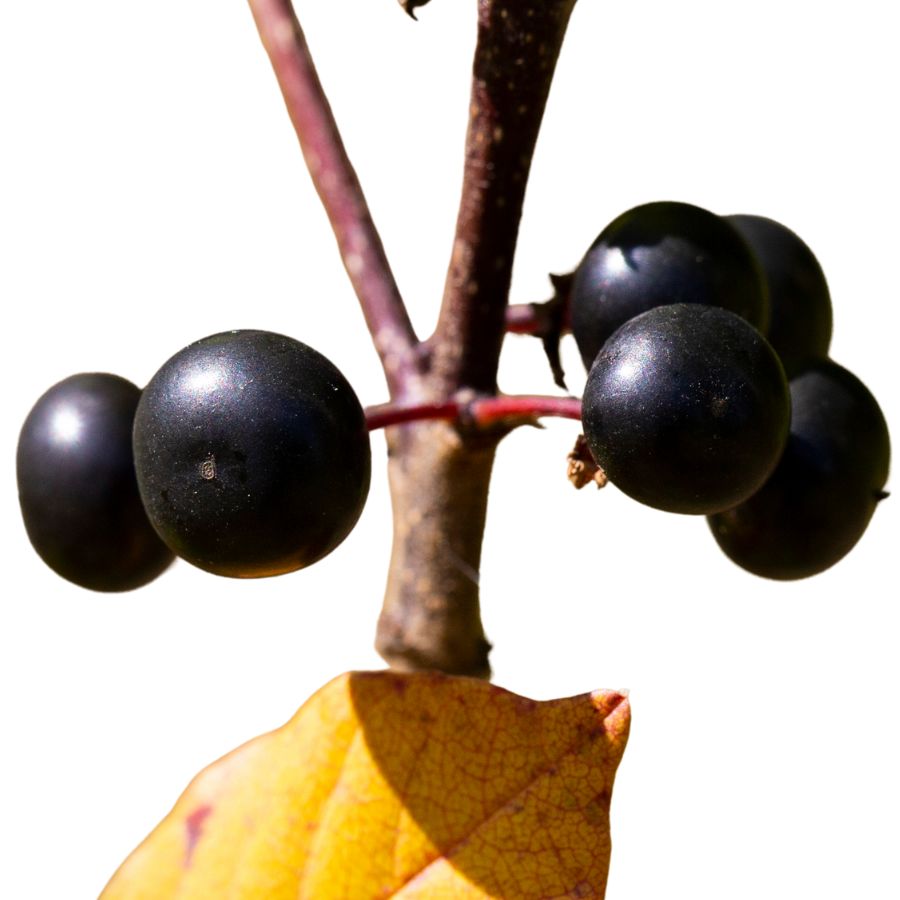
Often mistaken for: Elderberries (Sambucus spp.)
Buckthorn is a shrub or small tree often found along woodland edges, roadsides, and disturbed areas. It produces small, round berries that ripen to dark purple or black and usually grow in loose clusters.
These berries are sometimes mistaken for elderberries and other wild fruits, which also grow in dark clusters, but elderberries form flat-topped clusters on reddish stems while buckthorn berries are more scattered. Buckthorn berries are unsafe to eat as they contain compounds that can cause cramping, vomiting, and diarrhea, and large amounts may lead to dehydration and serious digestive problems.
Mayapple (Podophyllum peltatum)
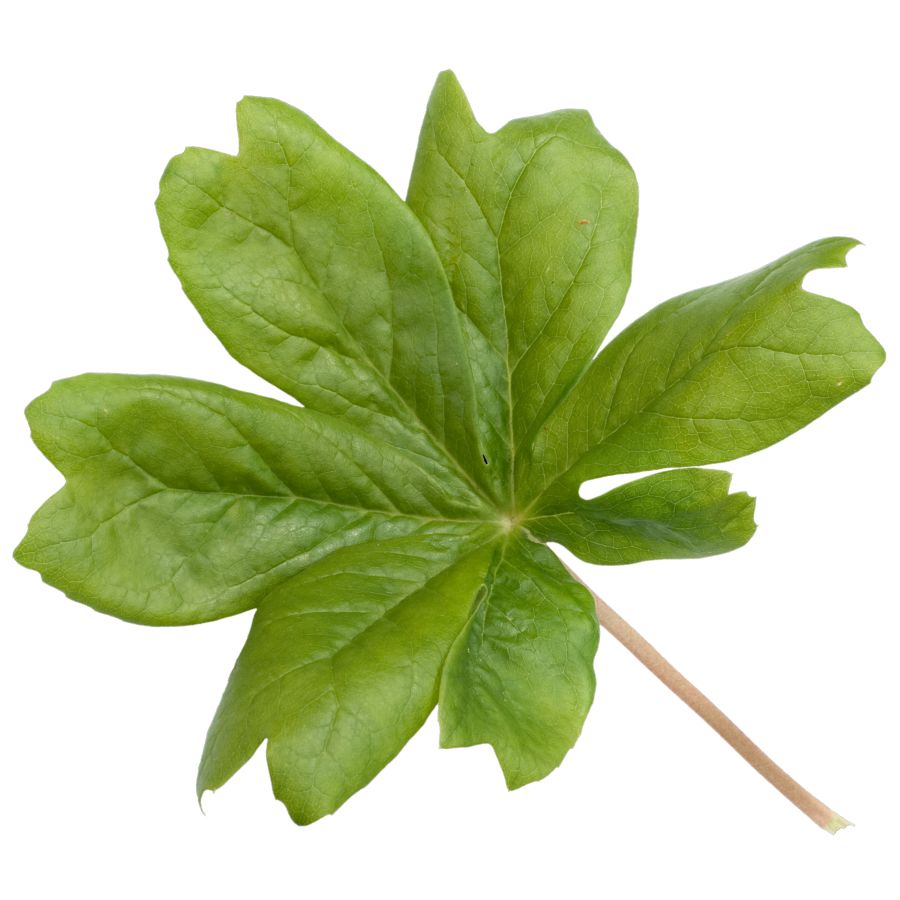
Often mistaken for: Wild grapes (Vitis spp.)
Mayapple is a low-growing plant found in shady forests and woodland clearings. It has large, umbrella-like leaves and produces a single pale fruit hidden beneath the foliage.
The unripe fruit resembles a small green grape, causing confusion with wild grapes, which grow in woody clusters on vines. All parts of the mayapple are toxic except the fully ripe, yellow fruit, which is only safe in small amounts. Eating unripe fruit or other parts can lead to nausea, vomiting, and severe dehydration.
Virginia Creeper (Parthenocissus quinquefolia)
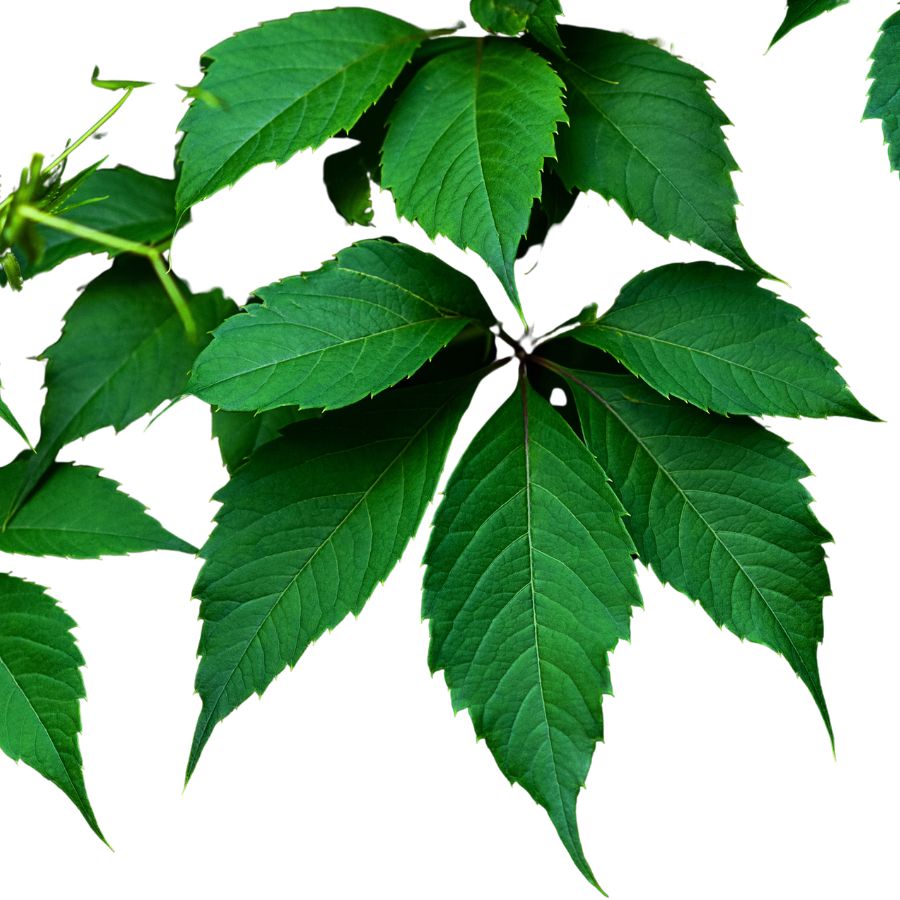
Often mistaken for: Wild grapes (Vitis spp.)
Virginia creeper is a fast-growing vine found on fences, trees, and forest edges. It has five leaflets per stem and produces small, bluish-purple berries from late summer to fall.
It’s often confused with wild grapes since both are climbing vines with similar berries, but grapevines have large, lobed single leaves and tighter fruit clusters. Virginia creeper’s berries are toxic to humans and contain oxalate crystals that can cause nausea, vomiting, and throat irritation.
Castor Bean (Ricinus communis)
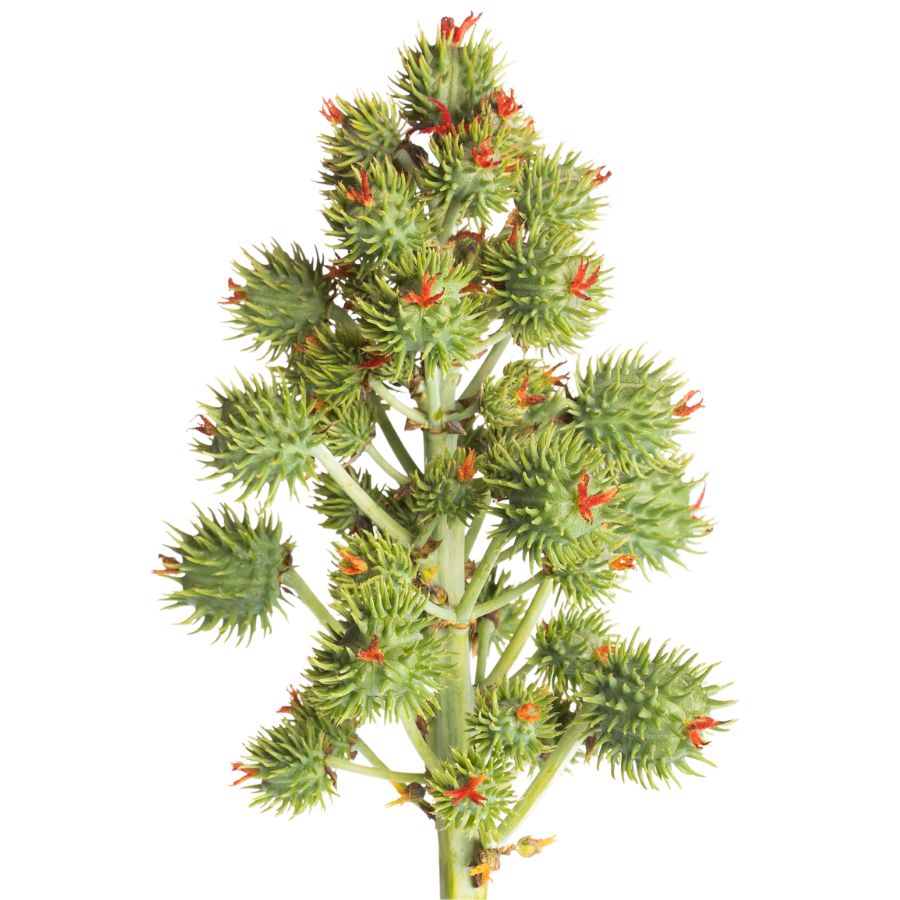
Often mistaken for: Wild rhubarb (Rumex spp. or Rheum spp.)
Castor bean is a bold plant with large, lobed leaves and tall red or green stalks, often found in gardens, along roadsides, and in disturbed areas in warmer regions in the US. Its red-tinged stems and overall size can resemble wild rhubarb to the untrained eye.
Unlike rhubarb, castor bean plants produce spiny seed pods containing glossy, mottled seeds that are extremely toxic. These seeds contain ricin, a deadly compound even in small amounts. While all parts of the plant are toxic, the seeds are especially dangerous and should never be handled or ingested.
A Quick Reminder
Before we get into the specifics about where and how to find these mushrooms, we want to be clear that before ingesting any wild mushroom, it should be identified with 100% certainty as edible by someone qualified and experienced in mushroom identification, such as a professional mycologist or an expert forager. Misidentification of mushrooms can lead to serious illness or death.
All mushrooms have the potential to cause severe adverse reactions in certain individuals, even death. If you are consuming mushrooms, it is crucial to cook them thoroughly and properly and only eat a small portion to test for personal tolerance. Some people may have allergies or sensitivities to specific mushrooms, even if they are considered safe for others.
The information provided in this article is for general informational and educational purposes only. Foraging for wild mushrooms involves inherent risks.
How to Get the Best Results Foraging
Safety should always come first when it comes to foraging. Whether you’re in a rural forest or a suburban greenbelt, knowing how to harvest wild foods properly is a key part of staying safe and respectful in the field.
Always Confirm Plant ID Before You Harvest Anything
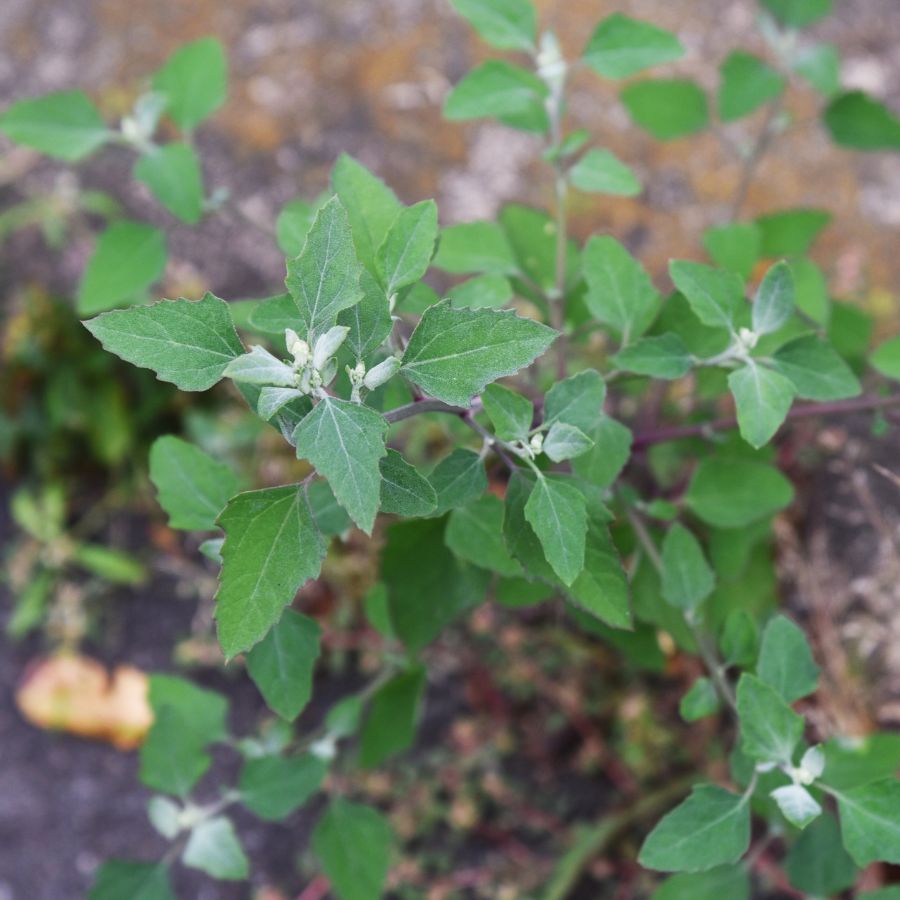
Knowing exactly what you’re picking is the most important part of safe foraging. Some edible plants have nearly identical toxic lookalikes, and a wrong guess can make you seriously sick.
Use more than one reliable source to confirm your ID, like field guides, apps, and trusted websites. Pay close attention to small details. Things like leaf shape, stem texture, and how the flowers or fruits are arranged all matter.
Not All Edible Plants Are Safe to Eat Whole
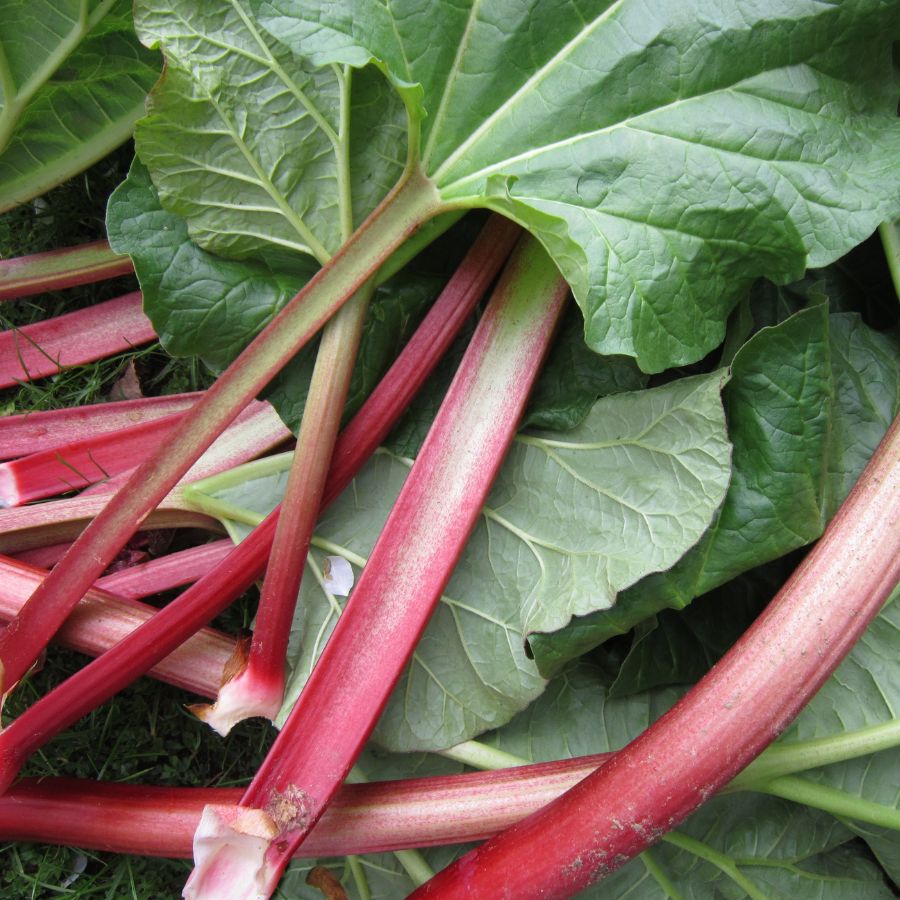
Just because a plant is edible doesn’t mean every part of it is safe. Some plants have leaves, stems, or seeds that can be toxic if eaten raw or prepared the wrong way.
For example, pokeweed is only safe when young and properly cooked, while elderberries need to be heated before eating. Rhubarb stems are fine, but the leaves are poisonous. Always look up which parts are edible and how they should be handled.
Avoid Foraging in Polluted or Contaminated Areas
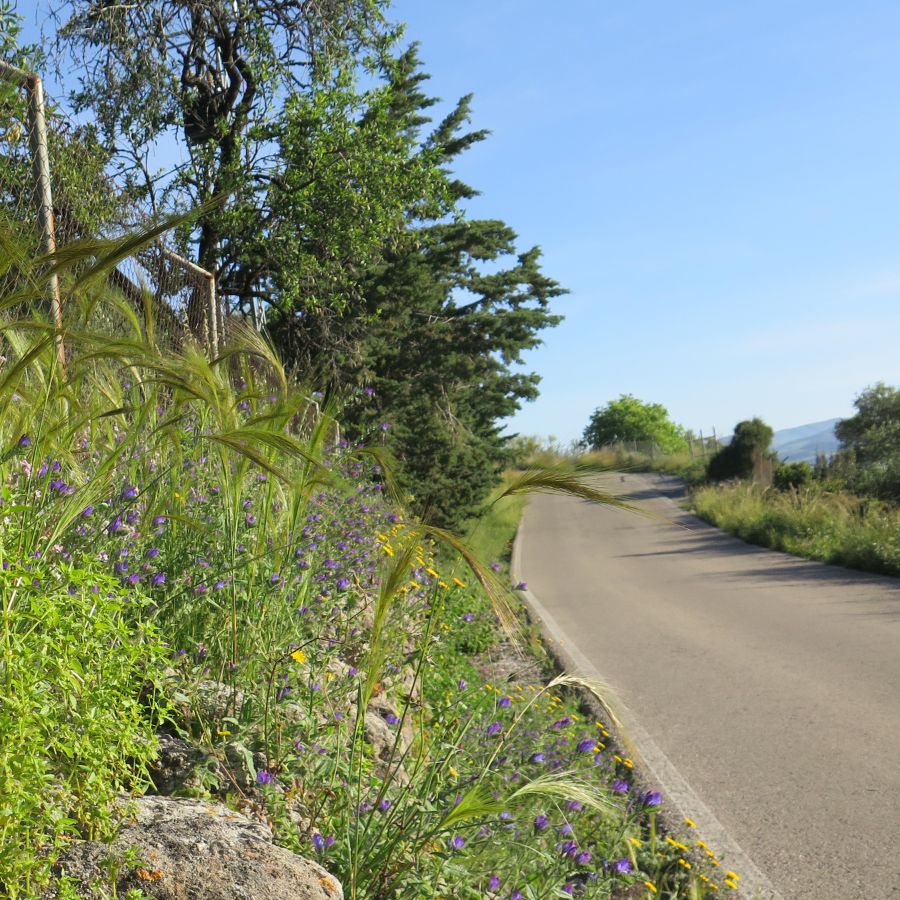
Where you forage matters just as much as what you pick. Plants growing near roads, buildings, or farmland might be coated in chemicals or growing in polluted soil.
Even safe plants can take in harmful substances from the air, water, or ground. Stick to clean, natural areas like forests, local parks that allow foraging, or your own yard when possible.
Don’t Harvest More Than What You Need
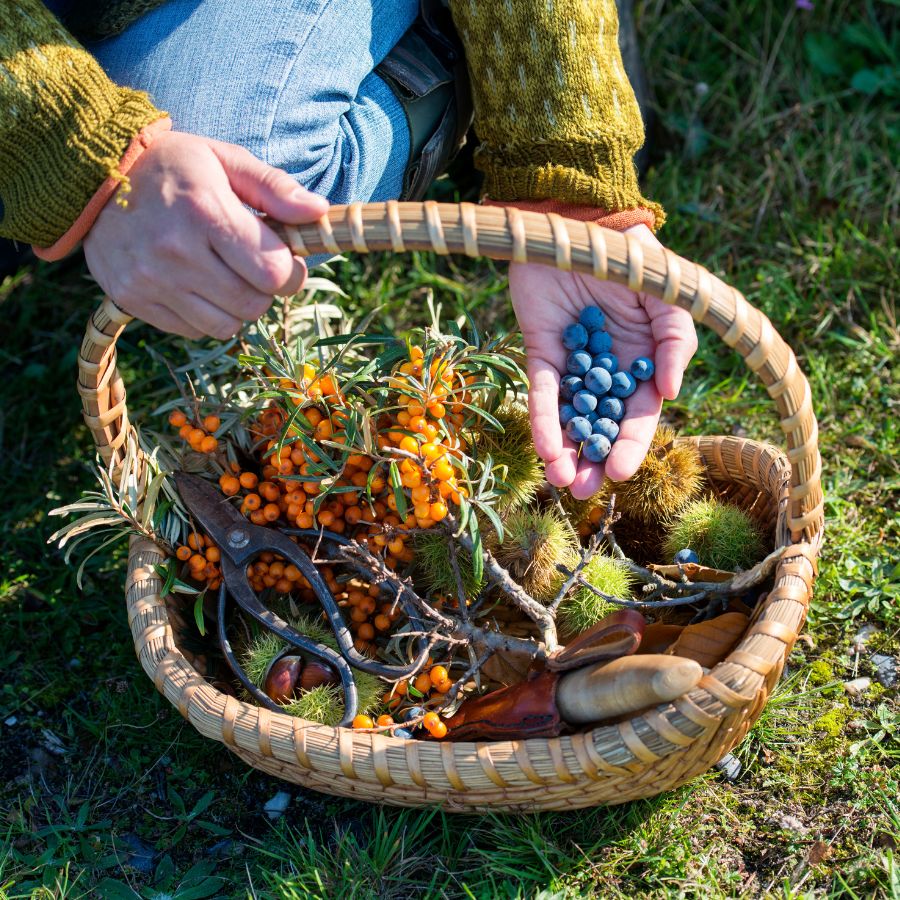
When you forage, take only what you plan to use. Overharvesting can hurt local plant populations and reduce future growth in that area.
Leaving plenty behind helps plants reproduce and supports wildlife that depends on them. It also ensures other foragers have a chance to enjoy the same resources.
Protect Yourself and Your Finds with Proper Foraging Gear

Having the right tools makes foraging easier and safer. Gloves protect your hands from irritants like stinging nettle, and a good knife or scissors lets you harvest cleanly without damaging the plant.
Use a basket or breathable bag to carry what you collect. Plastic bags hold too much moisture and can cause your greens to spoil before you get home.
This forager’s toolkit covers the essentials for any level of experience.
Watch for Allergic Reactions When Trying New Wild Foods

Even if a wild plant is safe to eat, your body might react to it in unexpected ways. It’s best to try a small amount first and wait to see how you feel.
Be extra careful with kids or anyone who has allergies. A plant that’s harmless for one person could cause a reaction in someone else.
Check Local Rules Before Foraging on Any Land
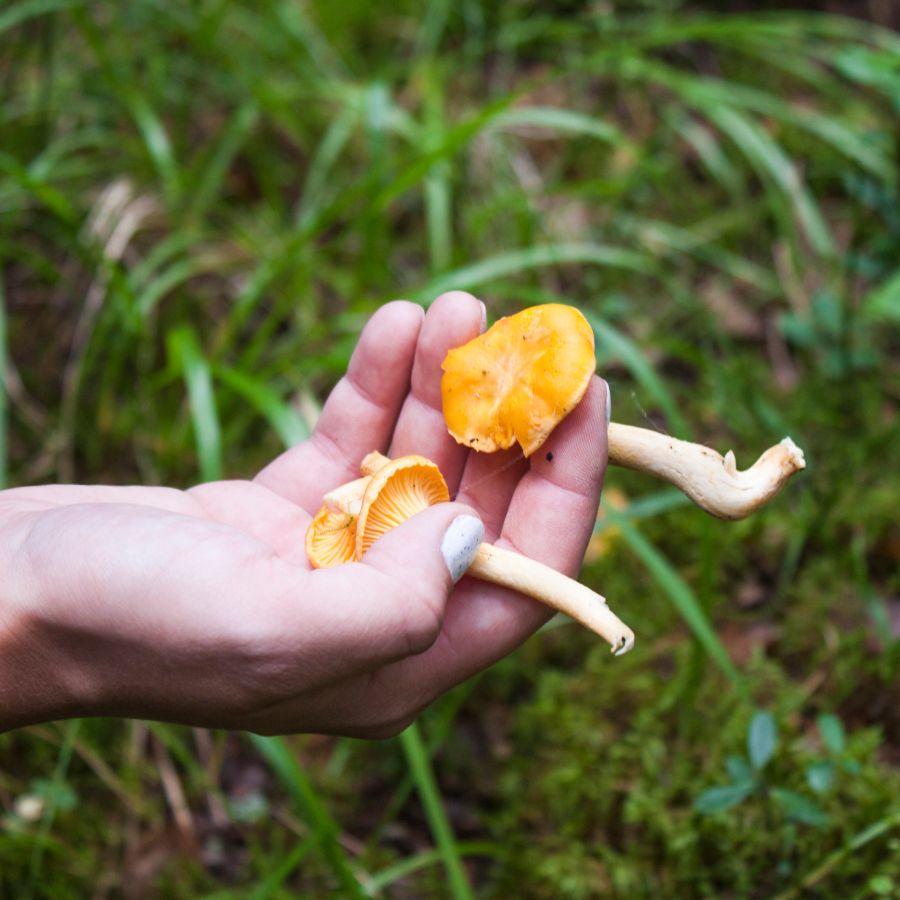
Before you start foraging, make sure you know the rules for the area you’re in. What’s allowed in one spot might be completely off-limits just a few miles away.
Some public lands permit limited foraging, while others, like national parks, usually don’t allow it at all. If you’re on private property, always get permission first.
Before you head out
Before embarking on any foraging activities, it is essential to understand and follow local laws and guidelines. Always confirm that you have permission to access any land and obtain permission from landowners if you are foraging on private property. Trespassing or foraging without permission is illegal and disrespectful.
For public lands, familiarize yourself with the foraging regulations, as some areas may restrict or prohibit the collection of mushrooms or other wild foods. These regulations and laws are frequently changing so always verify them before heading out to hunt. What we have listed below may be out of date and inaccurate as a result.
Where to Find Forageables in the State
There is a range of foraging spots where edible plants grow naturally and often in abundance:
| Plant | Locations |
| American Beautyberry (Callicarpa americana) | – Francis Marion National Forest – Congaree National Park – Magnolia Plantation and Gardens |
| Bramble (Rubus fruticosus) | – Sumter National Forest – Table Rock State Park – R and R Acres, Jamestown |
| Blueberry (Vaccinium spp.) | – Sandhills State Forest – Lexington County (Rayner’s Blueberry) – Congaree National Park |
| Bull Thistle (Cirsium vulgare) | – Edisto River Wildlife Management Area – Coastal roadside meadows – Sumter National Forest |
| Burdock (Arctium minus) | – Urban edges and vacant lots in Greenville – Roadside ditches in Spartanburg – Community gardens in Columbia |
| Chickweed (Stellaria media) | – Shaded woodland trails in Oconee State Park – Moist areas in Harbison State Forest – Garden edges in Charleston suburbs |
| Dandelion (Taraxacum officinale) | – Dewees Island – Open fields in Charleston County – Lawns and parks in Mount Pleasant |
| Milkweed (Asclepias syriaca) | – Upper Piedmont counties – Sandhills region – Coastal Plain counties |
| Daylily (Hemerocallis fulva) | – Roadside embankments in Greenville – Abandoned homesteads in York County – Edges of agricultural fields in Florence |
| Curly Dock (Rumex crispus) | – Wet meadows in Sumter National Forest – Along the banks of the Broad River – Ditches in Richland County |
| Elderberry (Sambucus nigra) | – Swampy areas in Congaree National Park – Wooded areas in Pickens County – Along streams in Francis Marion National Forest |
| Goldenrod (Solidago canadensis) | – Open fields in the Blue Ridge Mountains – Meadows in the Sandhills region – Roadsides in the Piedmont area |
| Greenbrier (Smilax bona-nox) | – Understory of hardwood forests in Sumter National Forest – Thickets in Francis Marion National Forest – Edges of wetlands in Jasper County |
| Groundnut (Apios americana) | – Along riverbanks in the Pee Dee region – Moist woodlands in the Upstate – Edges of swamps in the Coastal Plain |
| Henbit (Lamium amplexicaule) | – Lawns and gardens in Columbia – Fields in the Midlands – Urban areas in Charleston |
| Jerusalem Artichoke (Helianthus tuberosus) | – Sunny clearings in Oconee County – Along fence lines in the Upstate – Abandoned fields in the Piedmont region |
| Lamb’s Quarters (Chenopodium album) | – Disturbed soils in agricultural fields in Lexington County – Vacant lots in Greenville – Garden edges in Spartanburg |
| Mulberry (Morus rubra) | – Forest edges in Sumter National Forest – Along streams in the Midlands – Urban parks in Charleston |
| Muscadine (Vitis rotundifolia) | – Vineyards in the Piedmont region – Wild along forest edges in the Coastal Plain – Climbing trees in Francis Marion National Forest |
| New Jersey Tea (Ceanothus americanus) | – Sumter National Forest – Carolina Sandhills National Wildlife Refuge – Kings Mountain State Park |
| Pawpaw (Asimina triloba) | – Congaree National Park – Oconee State Park – Clemson Experimental Forest |
| American Persimmon (Diospyros virginiana) | – Edisto Island – Sandhills State Forest – Table Rock State Park |
| Redroot Pigweed (Amaranthus retroflexus) | – Agricultural fields in Orangeburg County – Roadside ditches in Florence County – Fallow fields in Spartanburg County |
| Pine (Pinus spp.) | – Francis Marion National Forest – Longleaf Pine Heritage Preserve – Harbison State Forest |
| Redbud (Cercis canadensis) | – Edisto Island – Sumter County woodlands – Urban parks in Columbia |
| Sassafras (Sassafras albidum) | – Edisto Island – Carolina Sandhills National Wildlife Refuge – Oconee County forests |
| Shepherd’s Purse (Capsella bursa-pastoris) | – Agricultural fields in Lexington County – Roadside areas in Greenville – Community gardens in Charleston |
| Smartweed (Persicaria hydropiper) | – Wetlands in Georgetown County – Along the banks of the Pee Dee River – Swampy areas in Sumter County |
| Spicebush (Lindera benzoin) | – Congaree National Park – Sumter National Forest – Jocassee Gorges Wilderness Area |
| Sumac (Rhus glabra) | – Open fields in Pickens County – Roadside areas in Aiken County – Forest edges in Kershaw County |
| Common Blue Violet (Viola sororia) | – Shaded lawns in Columbia – Woodland areas in Greenville County – Parklands in Charleston |
| Watercress (Nasturtium officinale) | – Streams in Oconee County – Springs in the Blue Ridge Mountains – Creek beds in Richland County |
| Wild Garlic (Allium vineale) | – Lawns in Charleston suburbs – Fields in the Midlands – Roadside areas in Florence County |
| Meadow Garlic (Allium canadense) | – Meadows in York County – Open fields in Lancaster County – Woodland edges in Anderson County |
| Wild Strawberry (Fragaria virginiana) | – Forest clearings in Sumter National Forest – Meadows in the Upstate – Parklands in Spartanburg County |
| Wood Sorrel (Oxalis stricta) | – Shaded gardens in Columbia – Woodland trails in Greenville – Urban parks in Charleston |
| Yarrow (Achillea millefolium) | – Open fields in the Piedmont region – Meadows in the Blue Ridge Mountains – Roadsides in the Sandhills area |
Peak Foraging Seasons
Different edible plants grow at different times of year, depending on the season and weather. Timing your search makes all the difference.
Spring
Spring brings a fresh wave of wild edible plants as the ground thaws and new growth begins:
| Plant | Months | Best Weather Conditions |
| Henbit (Lamium amplexicaule) | February – April | Damp, cool soil and cloudy skies |
| Shepherd’s Purse (Capsella bursa-pastoris) | February – April | Cool, moist disturbed soil after rain |
| Watercress (Nasturtium officinale) | February – April | Cool, clear, flowing water in full or filtered sun |
| Chickweed (Stellaria media) | March – May | Cool, moist conditions after rain; partial shade |
| Dandelion (Taraxacum officinale) | March – May | Mild temperatures, recently moistened soil |
| Curly Dock (Rumex crispus) | March – May | Cool spring days, best after rain |
| Redbud (Cercis canadensis) | March – April | Mild, sunny days with moist woodland soil |
| Sassafras (Sassafras albidum) | March – May | Warm and dry following rain; forest edges |
| Spicebush (Lindera benzoin) | March – May | Light shade; humid mornings in low woods |
| Common Blue Violet (Viola sororia) | March – May | Moist, shaded lawns or woodland edges |
| Wood Sorrel (Oxalis stricta) | March – May | Damp, shaded woods or garden edges |
| Milkweed (Asclepias syriaca) | April – June | Warm, sunny days with well-drained soil |
| Lamb’s Quarters (Chenopodium album) | April – June | Warm, dry days with light soil moisture |
| Daylily (Hemerocallis fulva) | April – June | Warm temperatures, ideally after light rain |
| Wild Strawberry (Fragaria virginiana) | April – May | Sunny, well-drained meadows or forest clearings |
| Yarrow (Achillea millefolium) | April – May | Dry, open fields with full sun |
Summer
Summer is a peak season for foraging, with fruits, flowers, and greens growing in full force:
| Plant | Months | Best Weather Conditions |
| Mulberry (Morus rubra) | May – July | Sunny weather after rainstorms |
| Milkweed (Asclepias syriaca) | May – July | Sunny, well-drained conditions |
| Daylily (Hemerocallis fulva) | May – July | Warm mornings after rain |
| Lamb’s Quarters (Chenopodium album) | May – July | Hot, dry days following rain |
| Wood Sorrel (Oxalis stricta) | May – August | Partial shade with moist soil |
| Wild Strawberry (Fragaria virginiana) | Early June (limited) | Cool mornings in partial sun |
| Blueberry (Vaccinium spp.) | June – July | Sunny, warm mornings; dry foliage |
| Bramble (Rubus fruticosus) | June – August | Warm and sunny after a few dry days |
| Elderberry (Sambucus nigra) | June – August | Hot, humid days near wetland edges |
| Bull Thistle (Cirsium vulgare) | June – August | Dry, sunny days in open ground |
| New Jersey Tea (Ceanothus americanus) | June – August | Dry, sunny woodland margins |
| Redroot Pigweed (Amaranthus retroflexus) | June – August | Hot, disturbed soil after rain |
| Smartweed (Persicaria hydropiper) | June – August | Moist, marshy areas with humid air |
| Yarrow (Achillea millefolium) | June – August | Warm, dry fields and pastures |
| American Beautyberry (Callicarpa americana) | July – September | Hot, humid weather; full sun or partial shade |
| Goldenrod (Solidago canadensis) | July – September | Dry, sunny days in open fields |
| Sumac (Rhus glabra) | July – September | Dry, sunny days in open fields or roadsides |
| Muscadine (Vitis rotundifolia) | August – September | Hot and dry, ideal in early morning |
Fall
As temperatures drop, many edible plants shift underground or produce their last harvests:
| Plant | Months | Best Weather Conditions |
| Bramble (Rubus fruticosus) | August – September | Warm weather, slightly dry air |
| Elderberry (Sambucus nigra) | Early September | Damp mornings and overcast afternoons |
| Blueberry (Vaccinium spp.) | Early September (late crops) | Mild, dry conditions with morning sun |
| American Beautyberry (Callicarpa americana) | September – October | Warm afternoons, light shade |
| Muscadine (Vitis rotundifolia) | September – October | Warm, dry air and sunny skies |
| Goldenrod (Solidago canadensis) | September – October | Dry, sunny fields after dew |
| Pawpaw (Asimina triloba) | September – October | Shaded woods with mild afternoons and cool nights |
| Redroot Pigweed (Amaranthus retroflexus) | September – October | Warm, dry conditions in disturbed fields |
| Spicebush (Lindera benzoin) | September – October | Shaded lowland forests with moderate humidity |
| Smartweed (Persicaria hydropiper) | September – October | Moist areas following rainfall |
| Sumac (Rhus glabra) | September – October | Dry weather in full sun; fruit easily shaken off |
| Yarrow (Achillea millefolium) | September – October | Dry, mild days with full sun exposure |
| Groundnut (Apios americana) | September – November | Damp, soft soil after rain |
| American Persimmon (Diospyros virginiana) | September – November | Sunny days, best after the first light frost |
| Jerusalem Artichoke (Helianthus tuberosus) | October – November | Cool days, dry soil for digging |
| Wild Garlic (Allium vineale) | October – November | Cool, dry days with soft, workable soil |
Winter
Winter foraging is limited but still possible, with hardy plants and preserved growth holding on through the cold:
| Plant | Months | Best Weather Conditions |
| Chickweed (Stellaria media) | December – February | Mild winter days after rain |
| Henbit (Lamium amplexicaule) | December – February | Damp, cool soil and overcast skies |
| Greenbrier (Smilax bona-nox) | December – February | Mild, humid conditions in understory shade |
| Shepherd’s Purse (Capsella bursa-pastoris) | December – February | Moist, disturbed soil in cool weather |
| Watercress (Nasturtium officinale) | December – February | Cold, flowing creeks with direct sunlight |
| Wood Sorrel (Oxalis stricta) | December – February | Shaded, moist spots during mild spells |
| Yarrow (Achillea millefolium) | December – February | Dry, sunny ground in open clearings |
| Dandelion (Taraxacum officinale) | January – February | Warm spells in otherwise cool weather |
| Wild Garlic (Allium vineale) | January – February | Sunny, unfrozen days with soft soil |
| Curly Dock (Rumex crispus) | January – March | Cold-tolerant; thrives after frost-free nights |
One Final Disclaimer
The information provided in this article is for general informational and educational purposes only. Foraging for wild plants and mushrooms involves inherent risks. Some wild plants and mushrooms are toxic and can be easily mistaken for edible varieties.
Before ingesting anything, it should be identified with 100% certainty as edible by someone qualified and experienced in mushroom and plant identification, such as a professional mycologist or an expert forager. Misidentification can lead to serious illness or death.
All mushrooms and plants have the potential to cause severe adverse reactions in certain individuals, even death. If you are consuming foraged items, it is crucial to cook them thoroughly and properly and only eat a small portion to test for personal tolerance. Some people may have allergies or sensitivities to specific mushrooms and plants, even if they are considered safe for others.
Foraged items should always be fully cooked with proper instructions to ensure they are safe to eat. Many wild mushrooms and plants contain toxins and compounds that can be harmful if ingested.

